Thermaltake Toughpower Grand RGB 750W PSU Review
RGB LED lighting is the new hotness, and a lot of power supplies are incorporating it. Thermaltake's Toughpower Grand RGB with 750W of maximum power boasts RGB lighting, surprisingly good performance, and modular cabling.
Why you can trust Tom's Hardware
A Look Inside And Component Analysis
Parts Description
Before proceeding with this page, we strongly encourage you to a look at our PSUs 101 article, which provides valuable information about PSUs and their operation, allowing you to better understand the components we're about to discuss. Our main tools for disassembling PSUs are a Thermaltronics soldering and rework station, and a Hakko FR-300 desoldering gun.
| General Data | |
|---|---|
| Manufacturer (OEM) | Sirfa/High Power |
| Primary Side | |
| Transient Filter | 4x Y caps, 2x X caps, 2x CM chokes, 1x MOV, 1x CMD02X |
| Inrush Protection | - |
| Bridge Rectifier(s) | 1x GBJ1506 (600V, 15A @ 100°C) |
| APFC MOSFETs | 2x Toshiba TK16A60W (600V, 15.8A @ 150°C, 0.16Ω) |
| APFC Boost Diode | 1x Infineon IDH06G65C5 (650V, 6A @ 145°C) |
| Hold-up Cap(s) | 1x Rubycon (400V, 680uF, 2000h @ 105°C, MXH) |
| Main Switchers | 2x Toshiba TK16A60W (600V, 15.8A @ 150°C, 0.16Ω) |
| APFC Controller | Infineon ICE3PCS01 |
| Switching Controller | Infineon ICE2HS01G |
| Topology | Primary side: Half-Bridge & LLC Resonant Controller Secondary side: Synchronous Rectification & DC-DC converters |
| Secondary Side | |
| +12V MOSFETs | 4x Infineon IPP041N04N G (40V, 80A @ 100°C, 4.1mΩ) |
| 5V & 3.3V | DC-DC Converters: 8x Infineon IPD060N03L (30V, 50A @ 100°C, 6mΩ) PWM Controller:1x APW7159 |
| Filtering Capacitors | Electrolytics: Nippon Chemi-Con (105°C, KY, KZE) Polymers: Nippon Chemi-Con |
| Supervisor IC | SITI PS223 (OVP, UVP, OCP, SCP, OTP) |
| Fan Model | Thermaltake TT-1425 (Hong Sheng OEM, A1425L12S, 140mm, 12V, 0.30A, 1450 RPM, hydro-dynamic bearing) |
| 5VSB Circuit | |
| Rectifier | 2x IPD060N03L FETs (30V, 50A @ 100°C, 6mΩ) |
| Standby PWM Controller | Sanken STR-A6069H |
| -12V Circuit | |
| Rectifier | KIA7912PI |
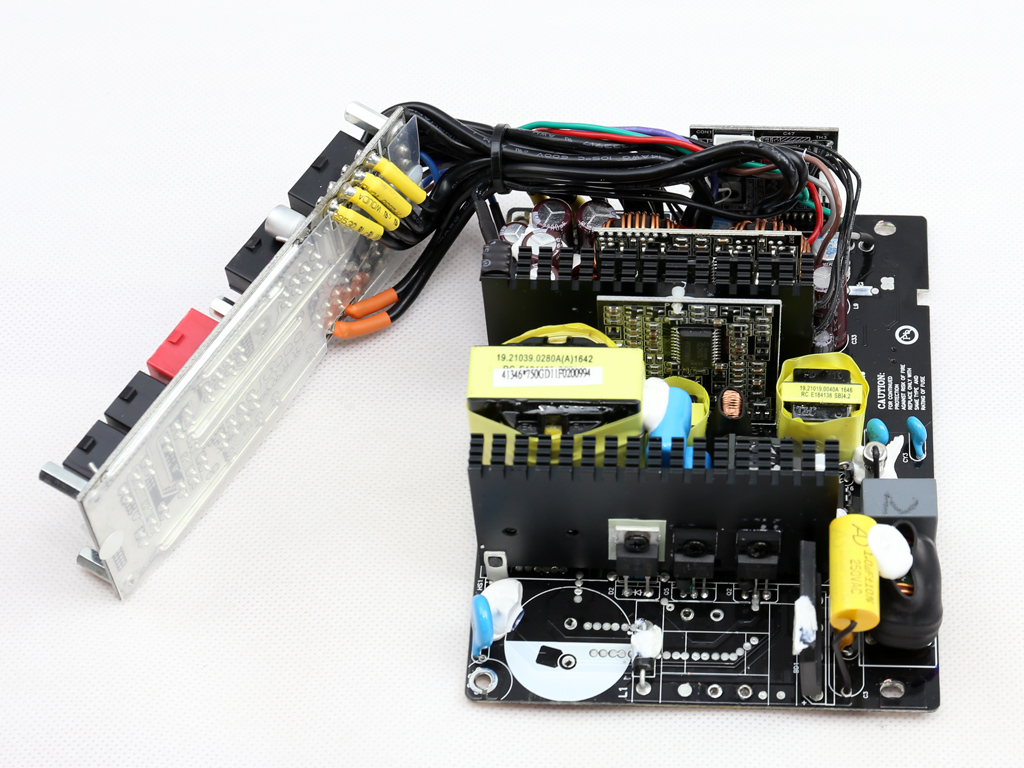

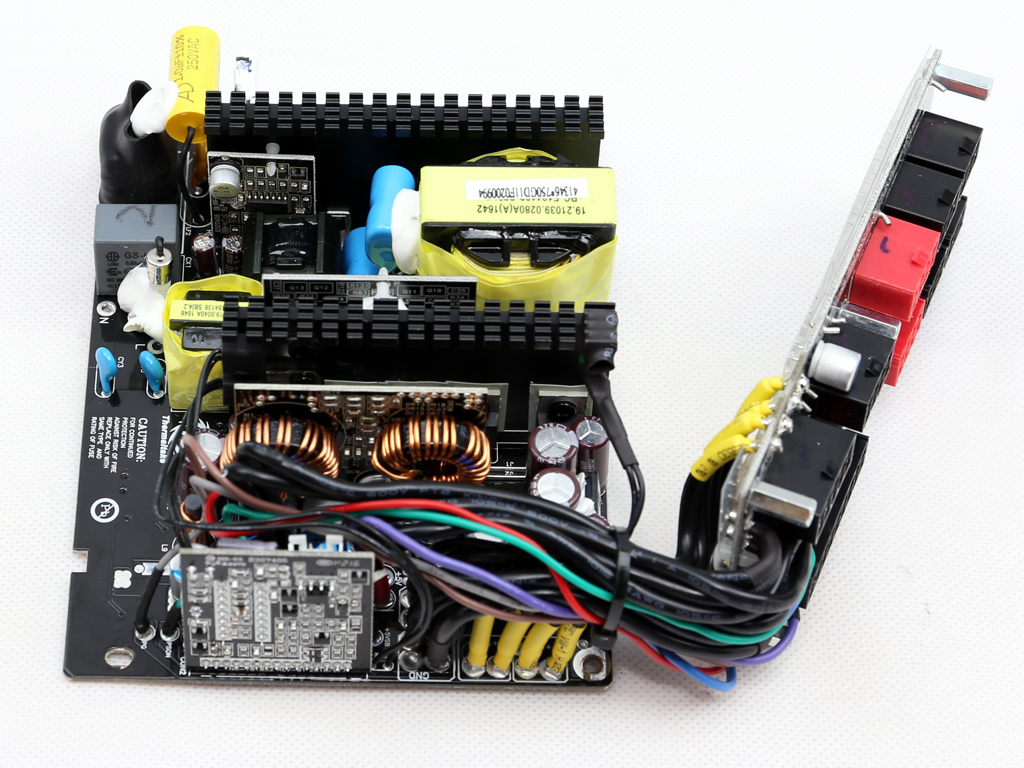
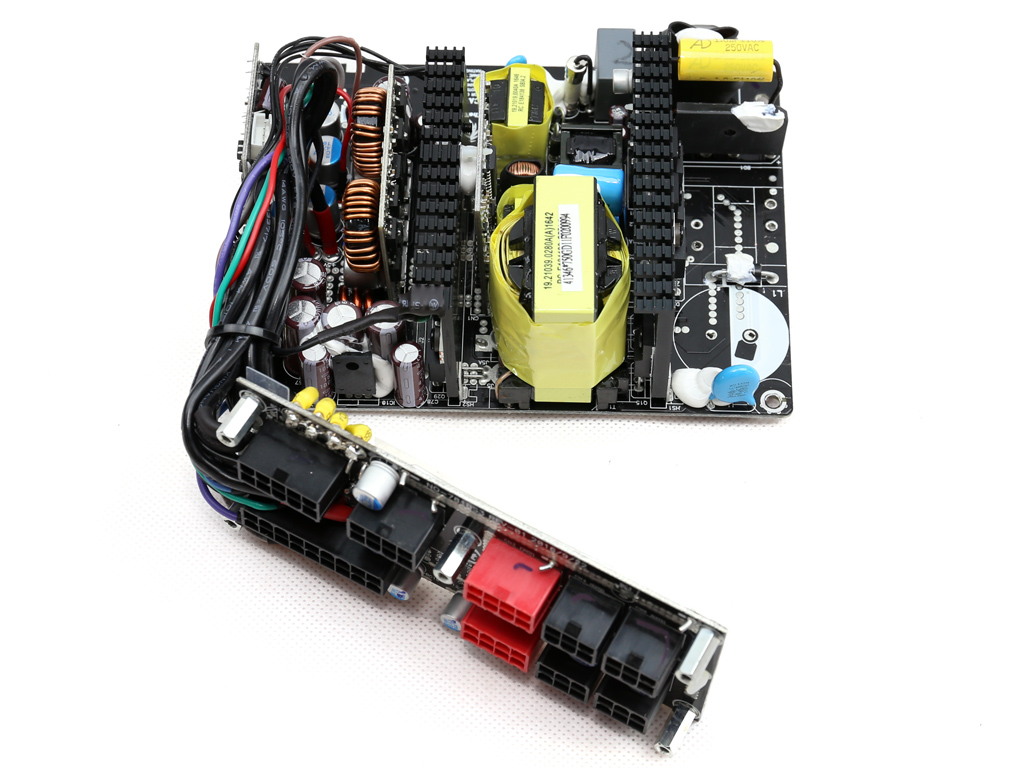
The last time we saw this Sirfa platform, it was in SilverStone's ST75F-PT. A slightly modified version is used in the ST75F-GS V2 and Zalman ZM750-EBT as well. It failed to impress us in the past, but we're willing to give the design another chance.
A couple of small heat sinks cool down the primary- and secondary-side FETs, and an even smaller sink cools the single bridge rectifier. The single-layer PCB is very small; only the size of the main transformer gives away this unit's moderately high capacity.
A half-bridge topology and an LLC resonant converter are used on the primary side. On the secondary side, we find a synchronous design for the +12V rail and a pair of DC-DC converters for the minor rails. The build quality looks good, but it'd be better if bus-bars were used instead of cables for transferring power to the modular board. In this way, power losses could be minimized, especially at higher loads. On top of that, these cables restrict airflow to the secondary side's filtering capacitors, thereby reducing their lifetime. Fortunately, all of the electrolytic caps are provided by Japanese manufacturers. The same goes for the polymer caps.
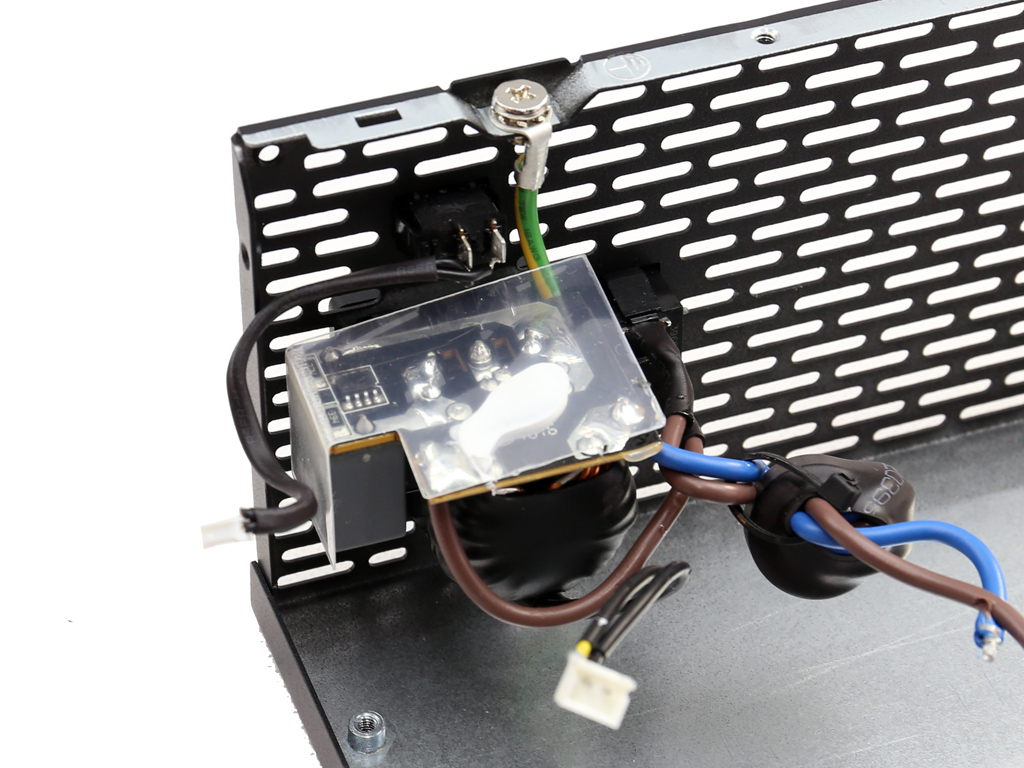
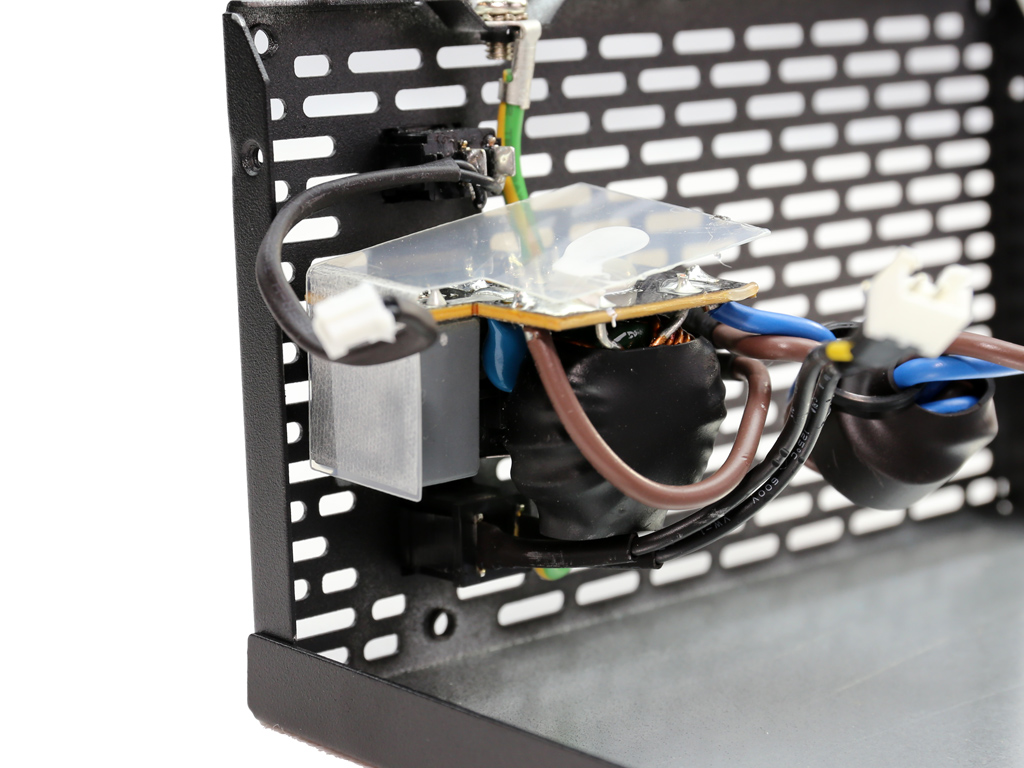
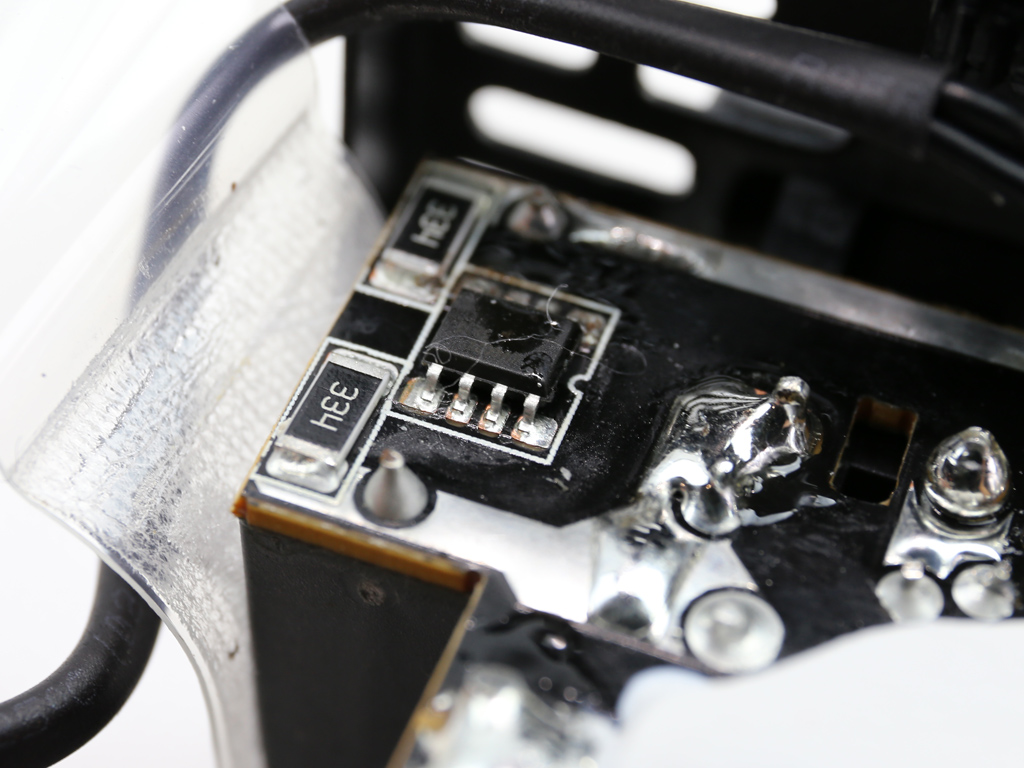
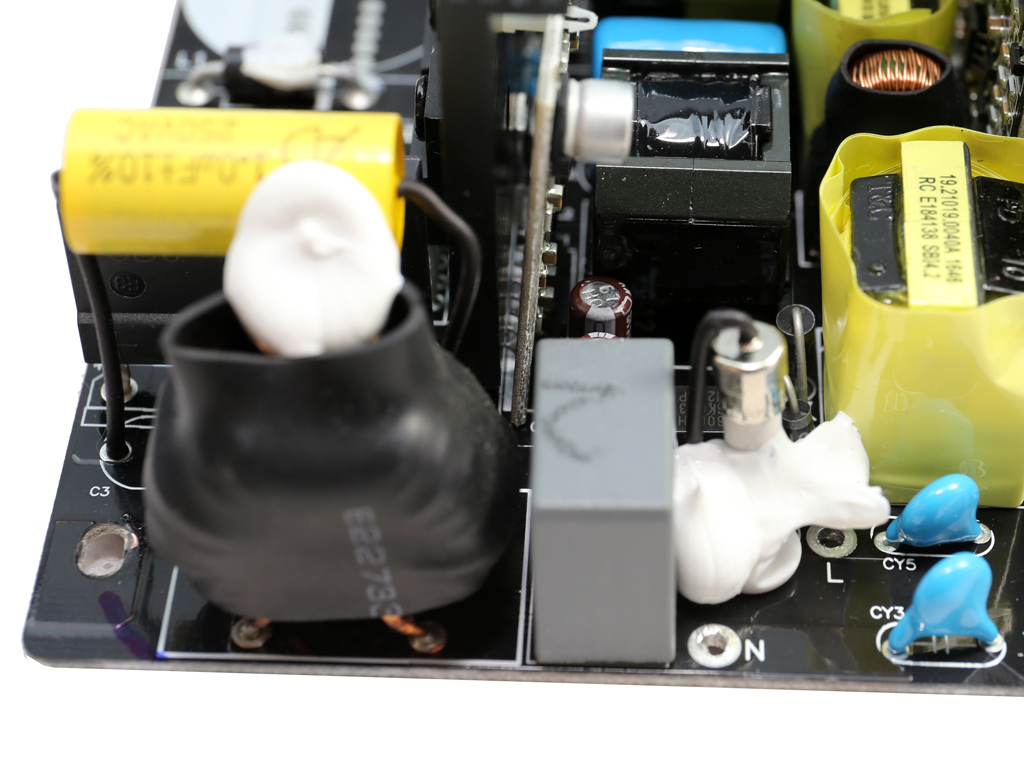
The first part of the transient filter includes two Y caps, a single X one, and a CM choke, along with two small bleeding resistors and a CMD02X IC that blocks current when AC voltage is connected. The same IC automatically discharges the X cap through the resistors when AC is disconnected. The second part of the EMI filter is on the main PCB. It includes two Y caps, a single X cap, and one CM choke. There is also a small MOV right next to the bridge rectifier, completing the filter. Unfortunately, inrush current protection is not part of this design, so in some cases the PSU can apply huge stress to your home's electric infrastructure. Sirfa should have provided inrush current protection, to be sure.
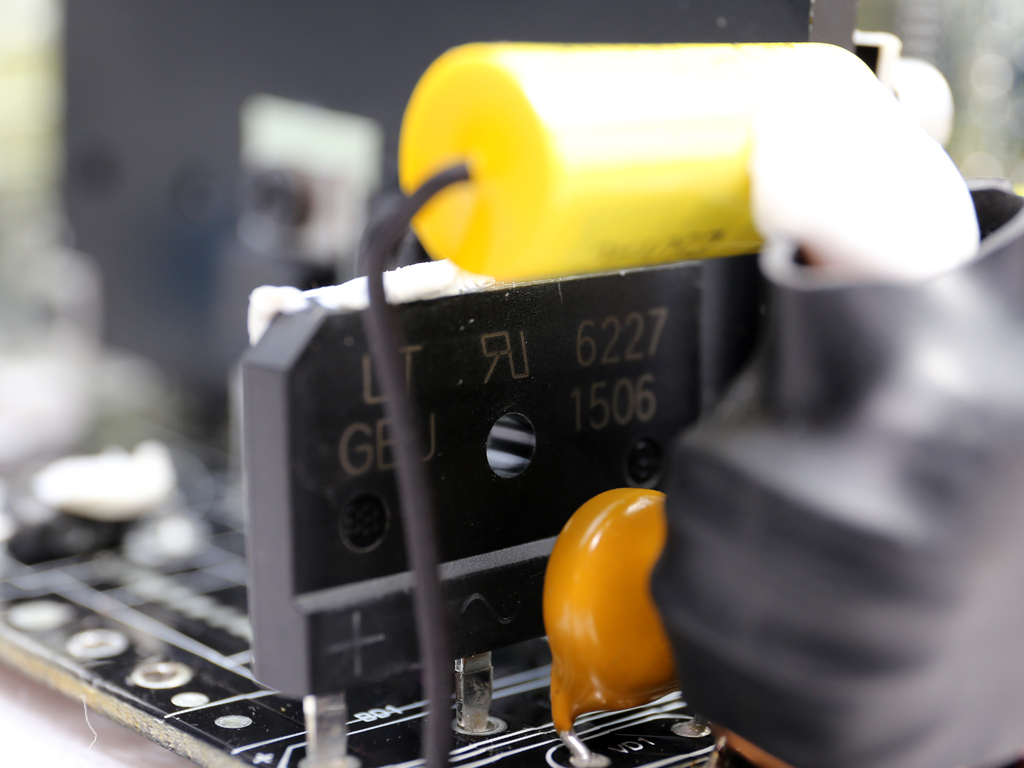
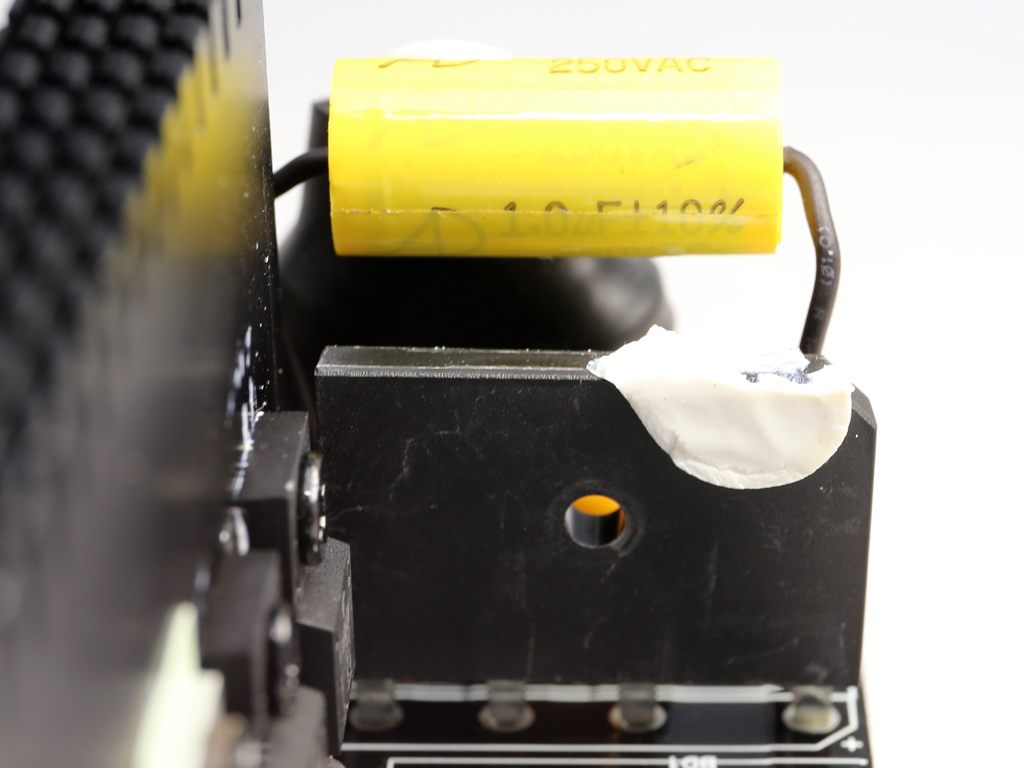

The single bridge rectifier is installed on a dedicated heat sink. No thermal grease is used to aid cooling, though this could have been a deliberate decision. After all, the higher the operating temperature of a bridge rectifier, the lower the voltage drops on its diodes, improving efficiency. The component's model number is GBJ1506, and it can handle enough amperage to cover this PSU's needs, even with 115V input.
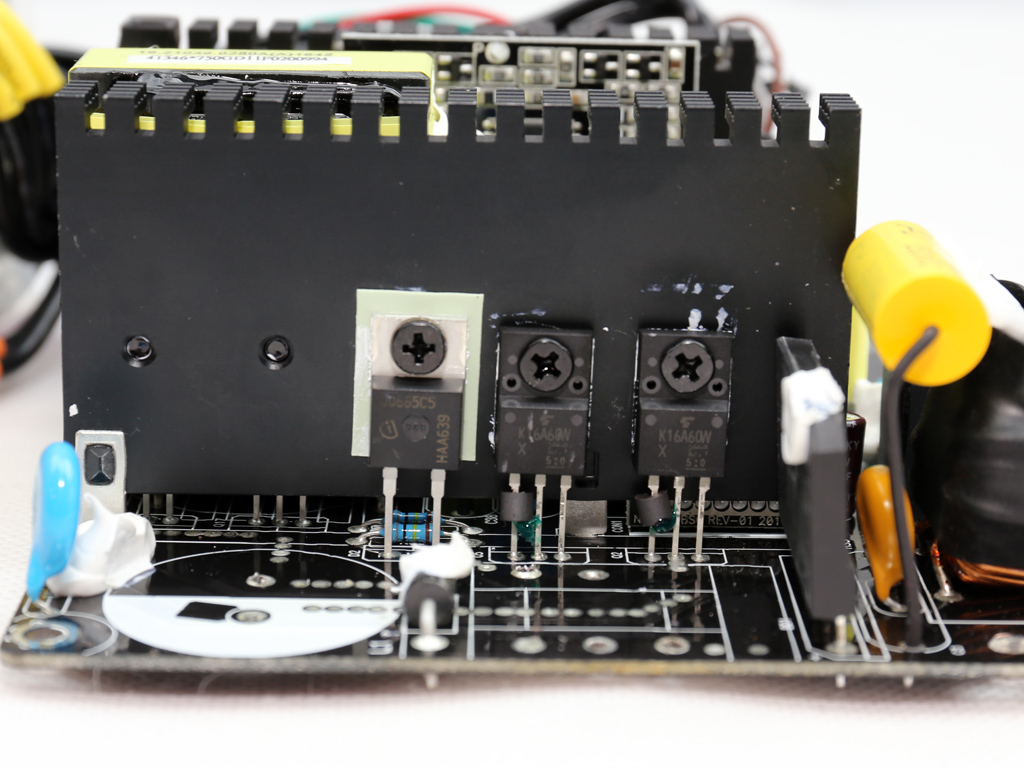


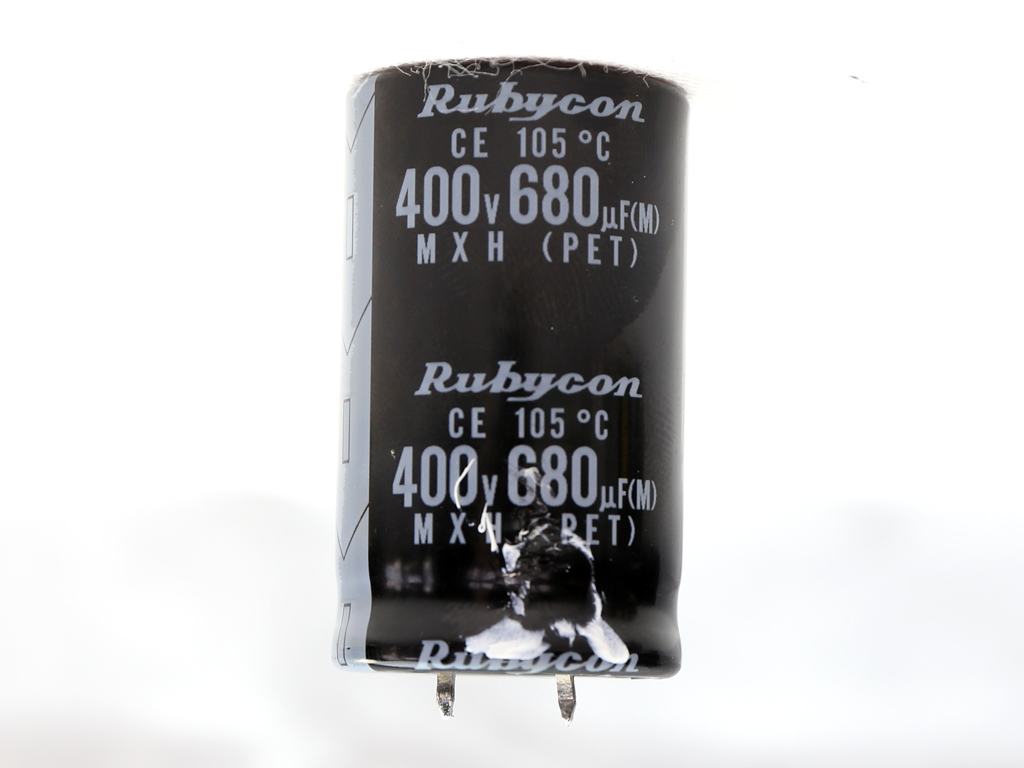
The APFC converter utilizes two Toshiba TK16A60W (600V, 15.8A @ 150°C, 0.16Ω) FETs and a single Infineon IDH06G65C5 (650V, 6A @ 145°C) boost diode. The bulk cap is a Rubycon (400V, 680uF, 2000h @ 105°C, MXH) with enough capacity to cover the PSU's needs.
Get Tom's Hardware's best news and in-depth reviews, straight to your inbox.
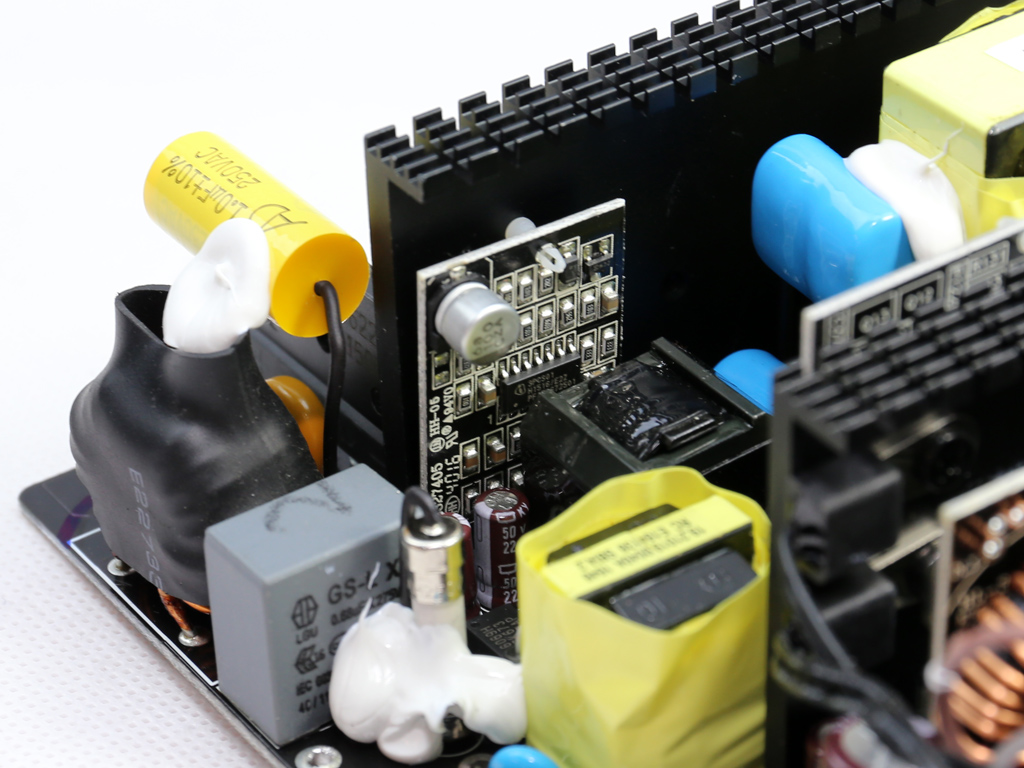
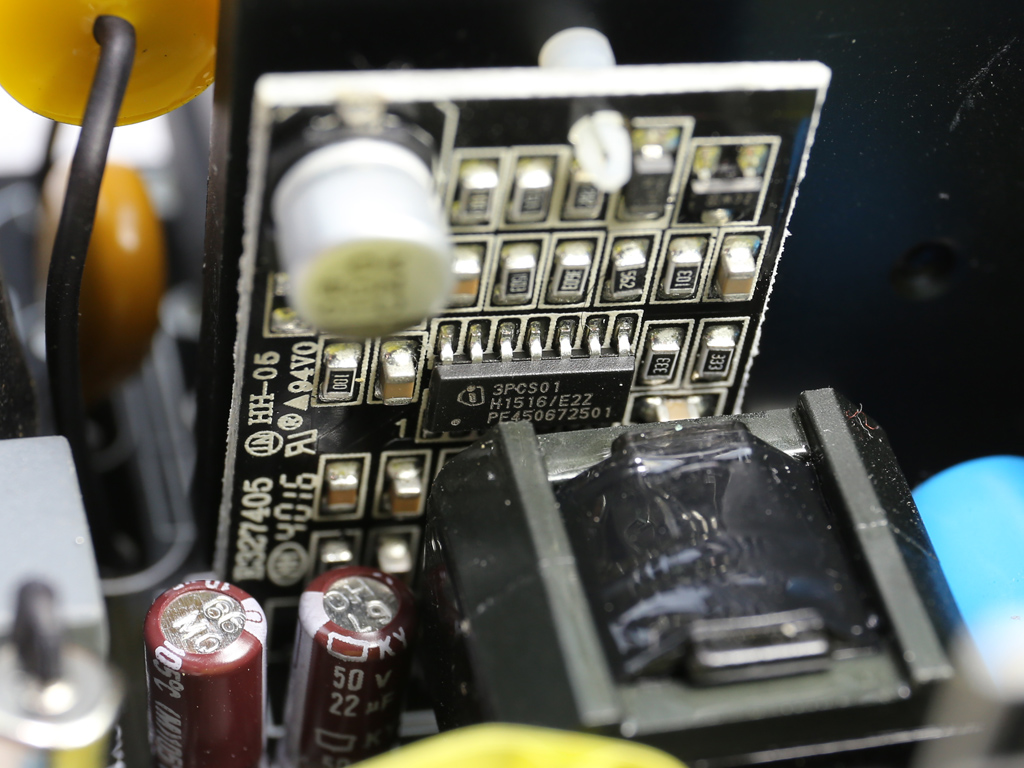
The PFC controller is installed on a small vertical daughterboard; it's an Infineon ICE3PCS01 IC.
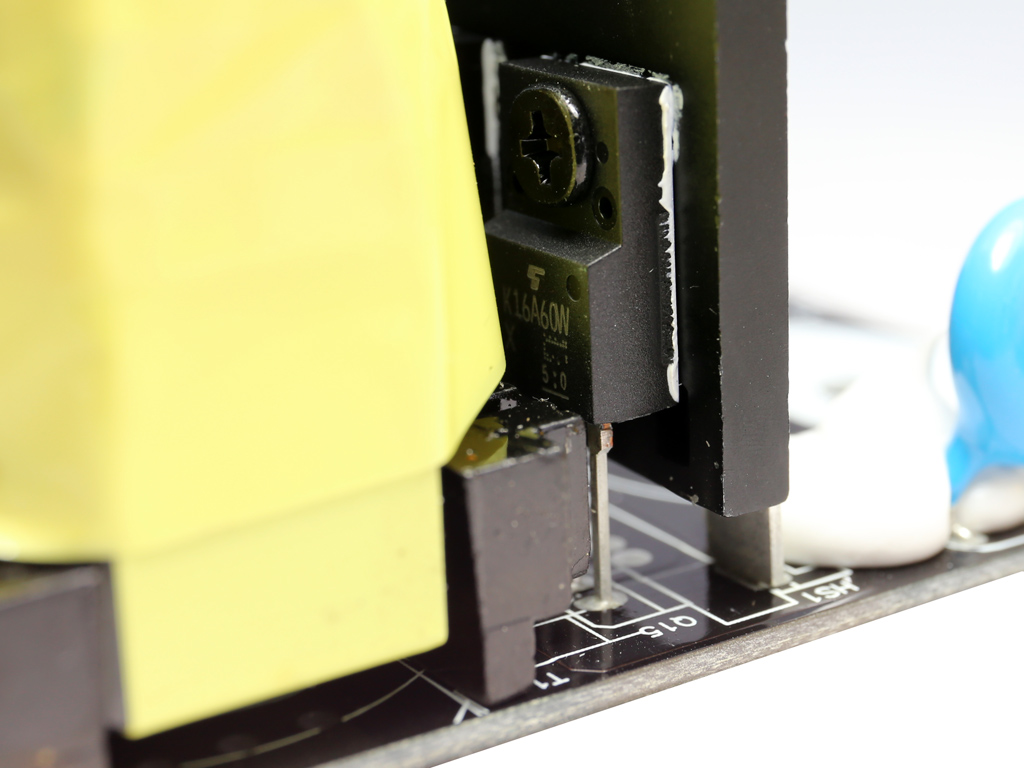
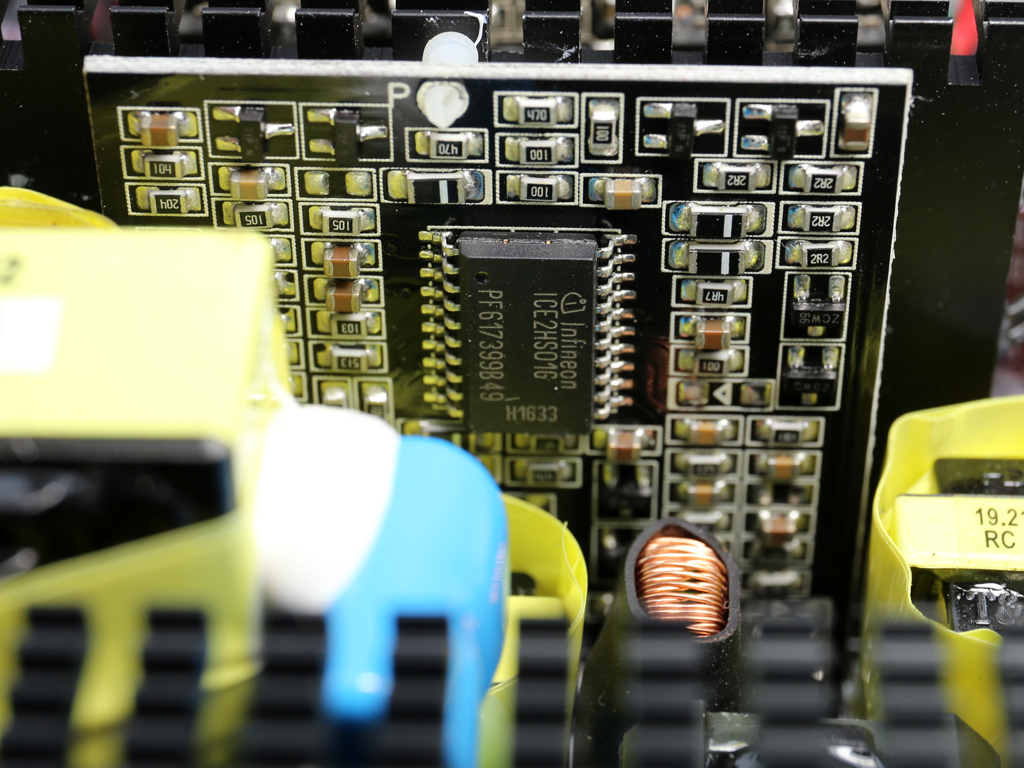
The primary switchers are two Toshiba TK16A60W (600V, 15.8A @ 150°C, 0.16Ω) FETs arranged into a half-bridge topology. The LLC resonant controller is an Infineon ICE2HS01G IC and it can be found on a vertical PCB.
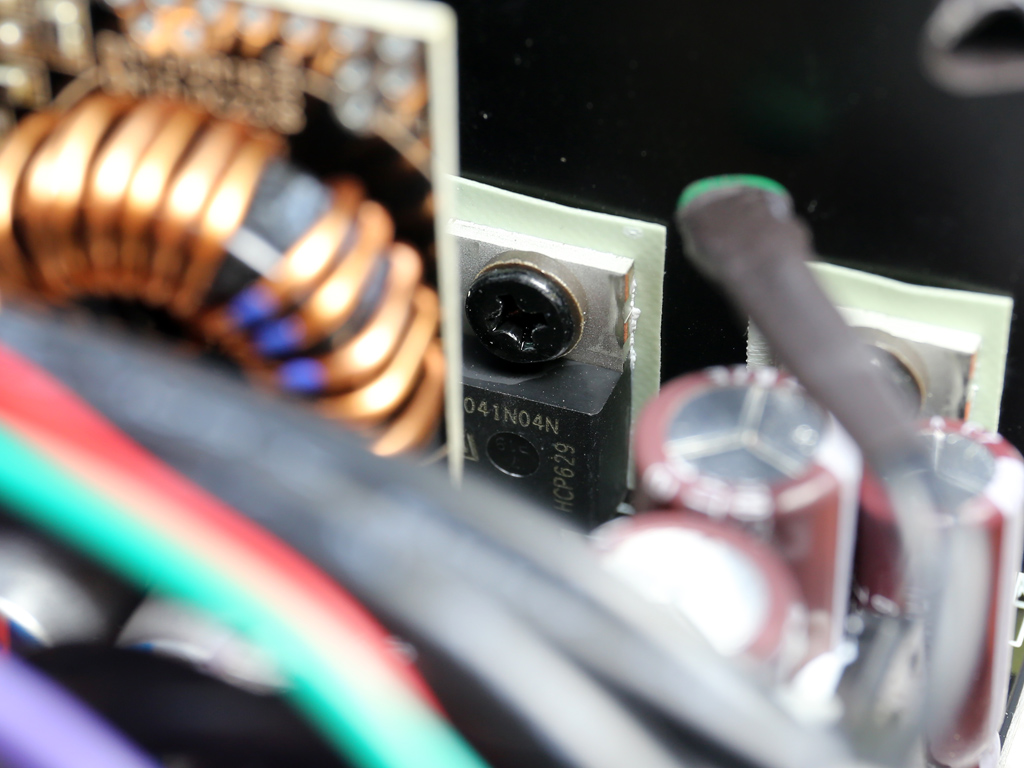
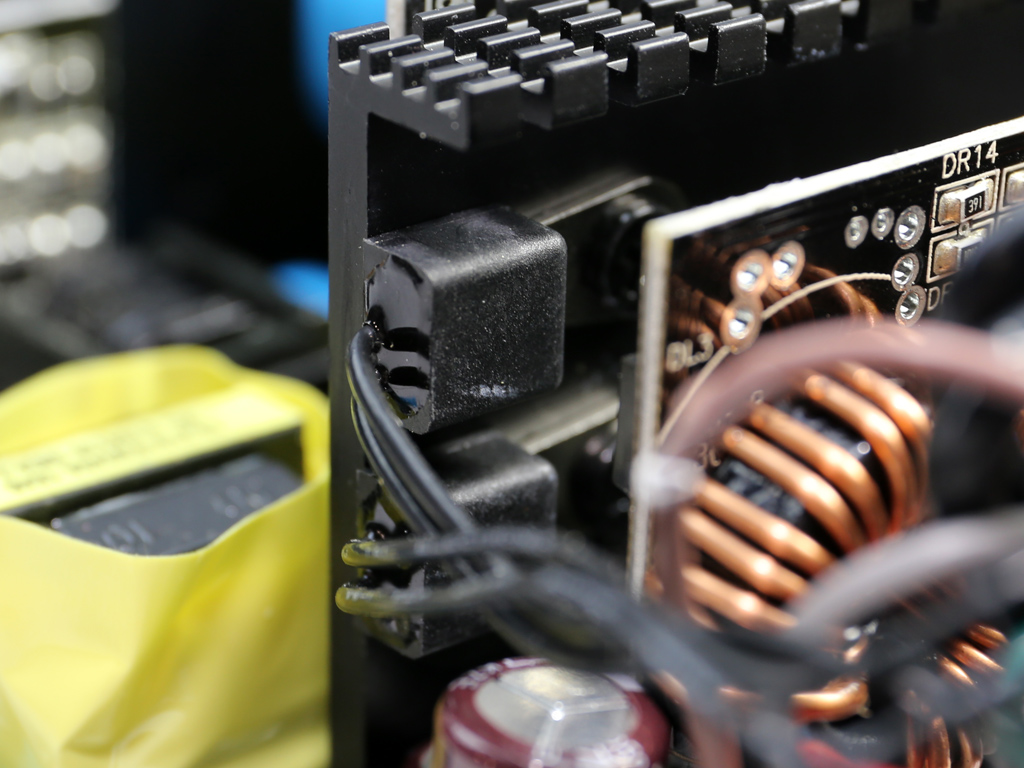
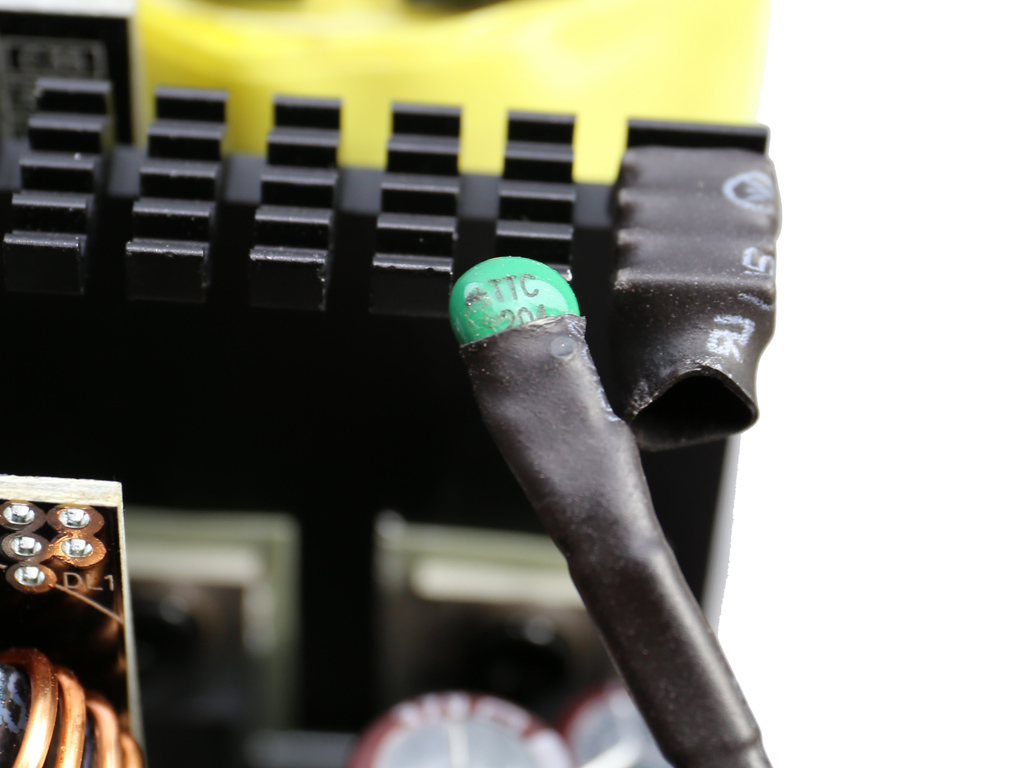
On the secondary side, four Infineon IPP041N04N G FETs regulate the +12V rail. Three NTC thermistors are installed on the same heat sink, providing information to the protection and fan control circuits.
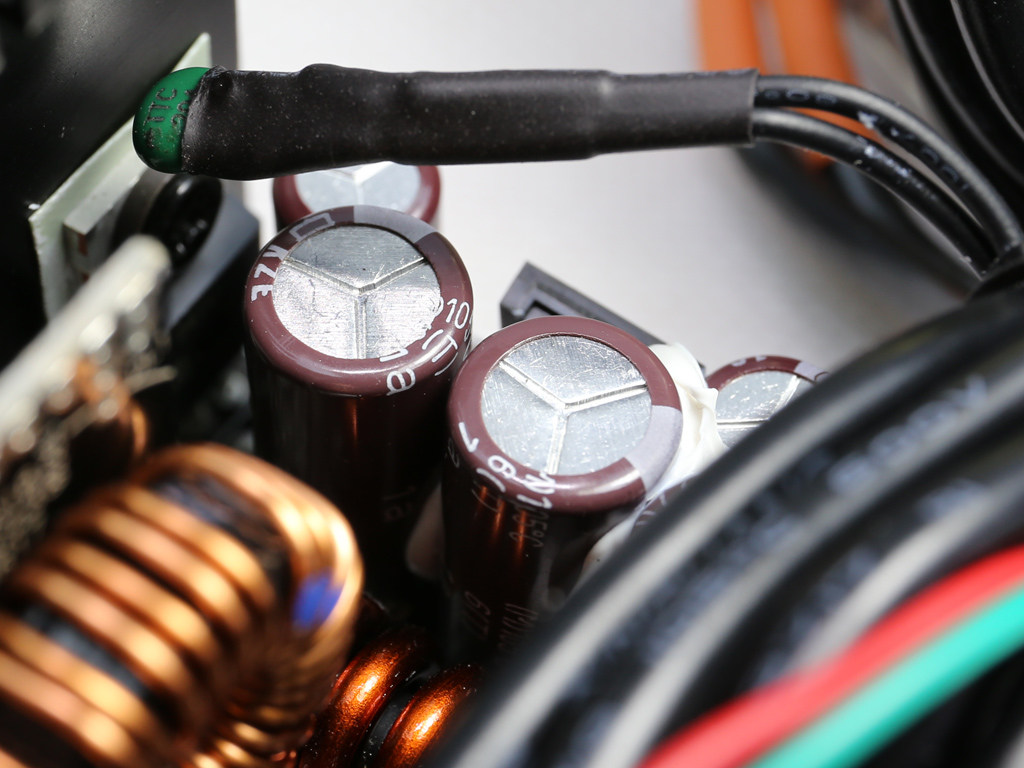
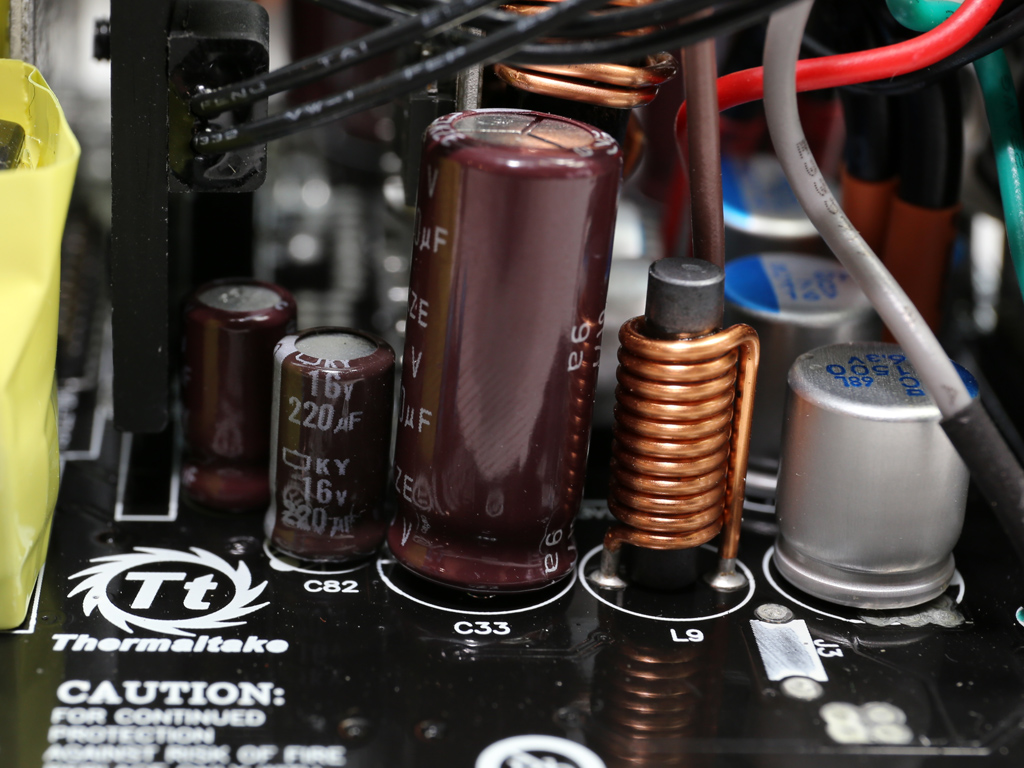
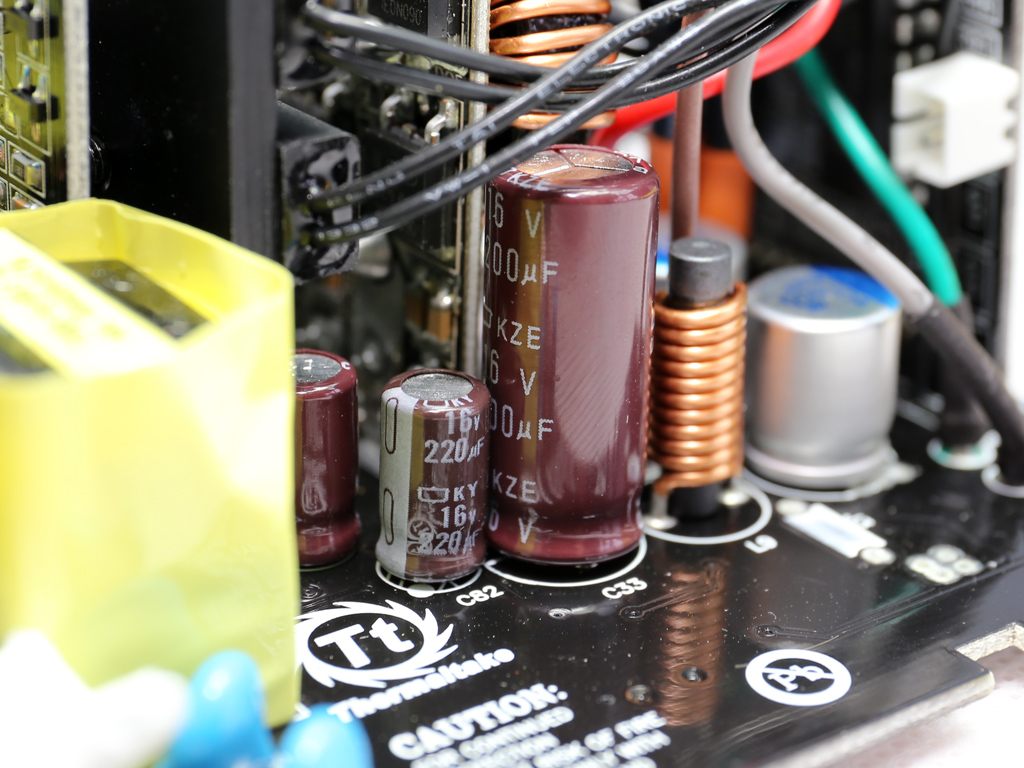
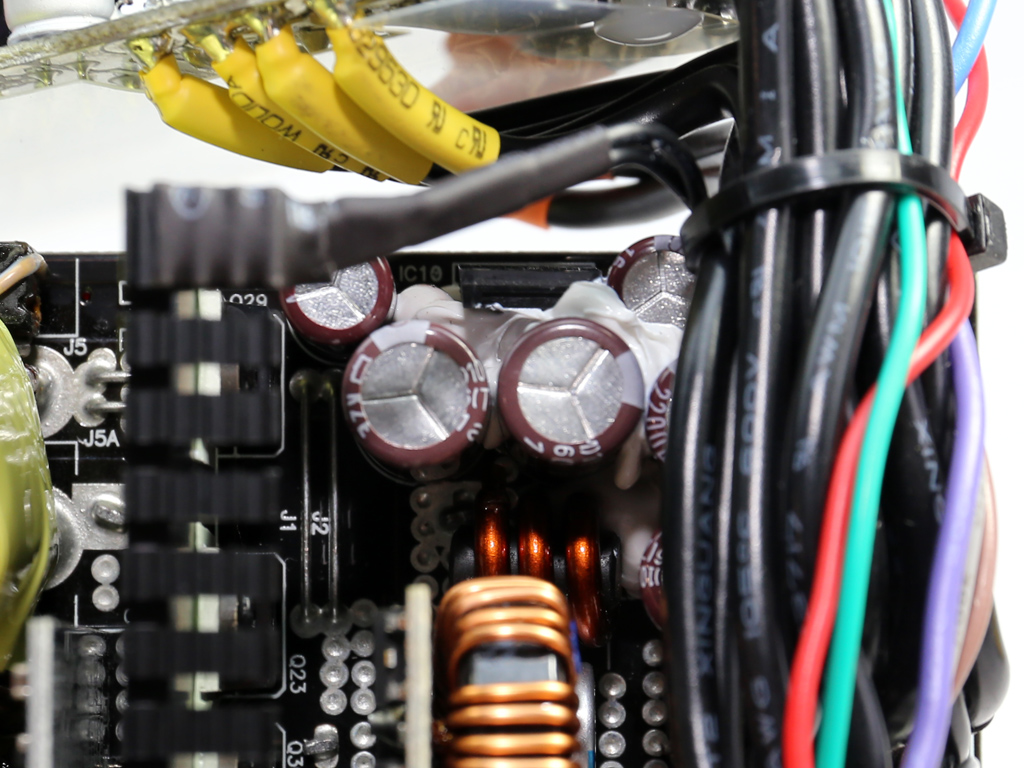
The +12V rail's filtering on the main PCB is handled by several Chemi-Con electrolytic caps (KZE, KY, 105 °C), which are supported by a few Chemi-Con polymer caps. Among the filtering caps, we spot a KIA7912PI voltage regulator that generates the -12V rail. Most companies use a single diode for this, since the rail isn't used any more.
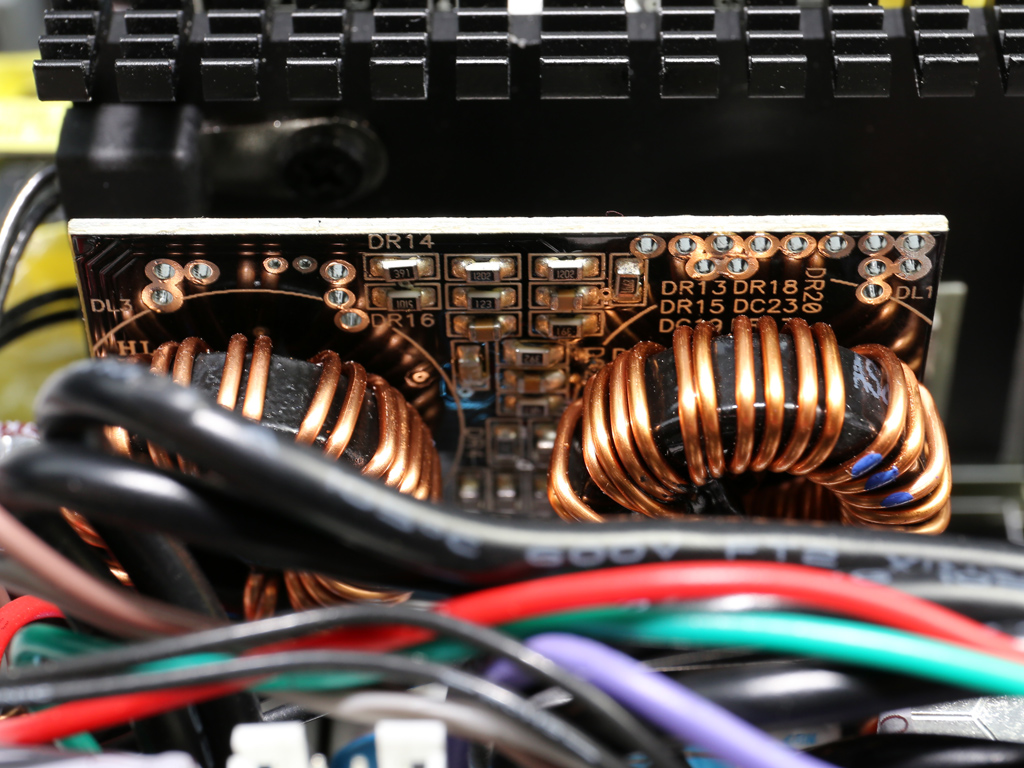
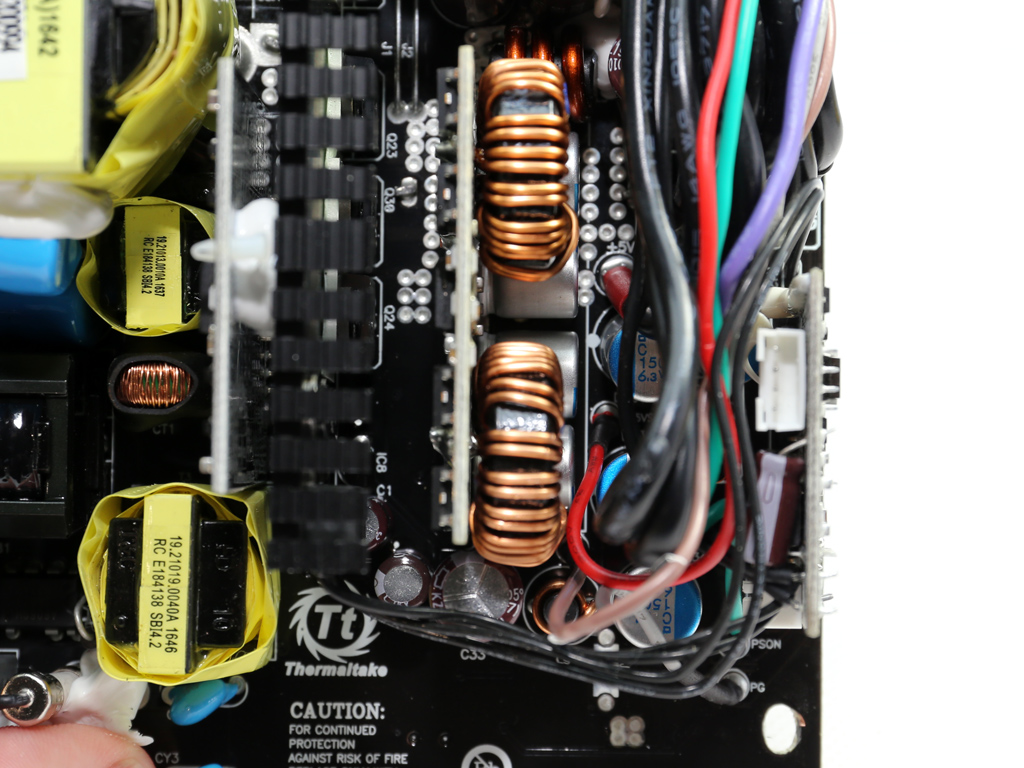
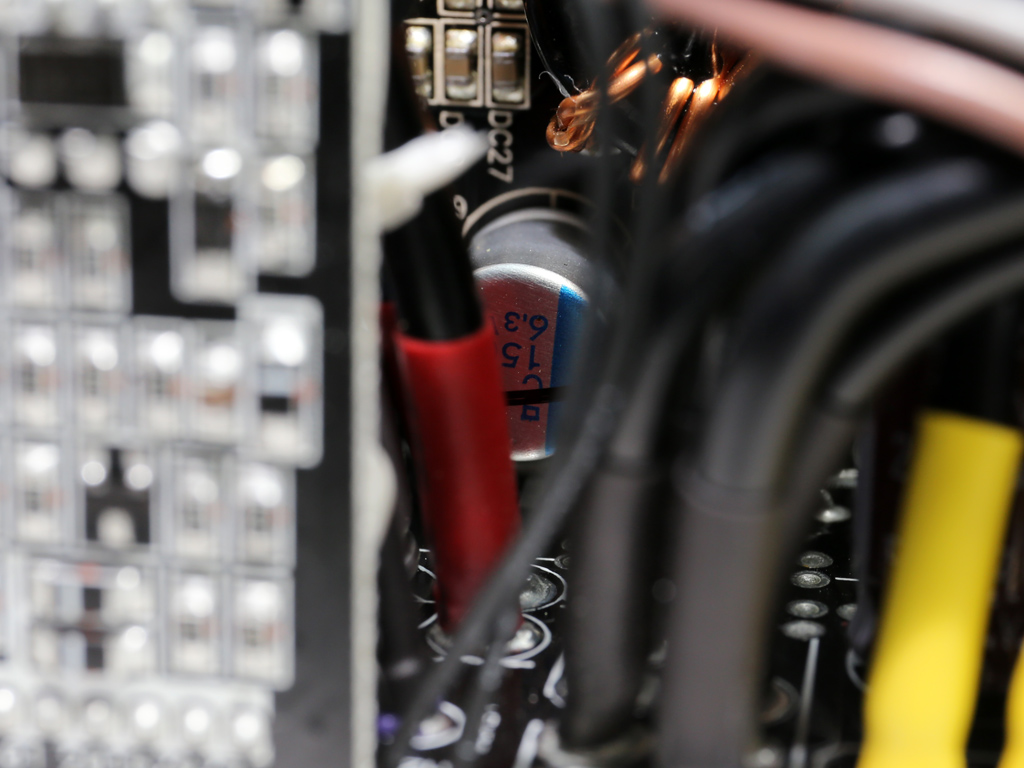
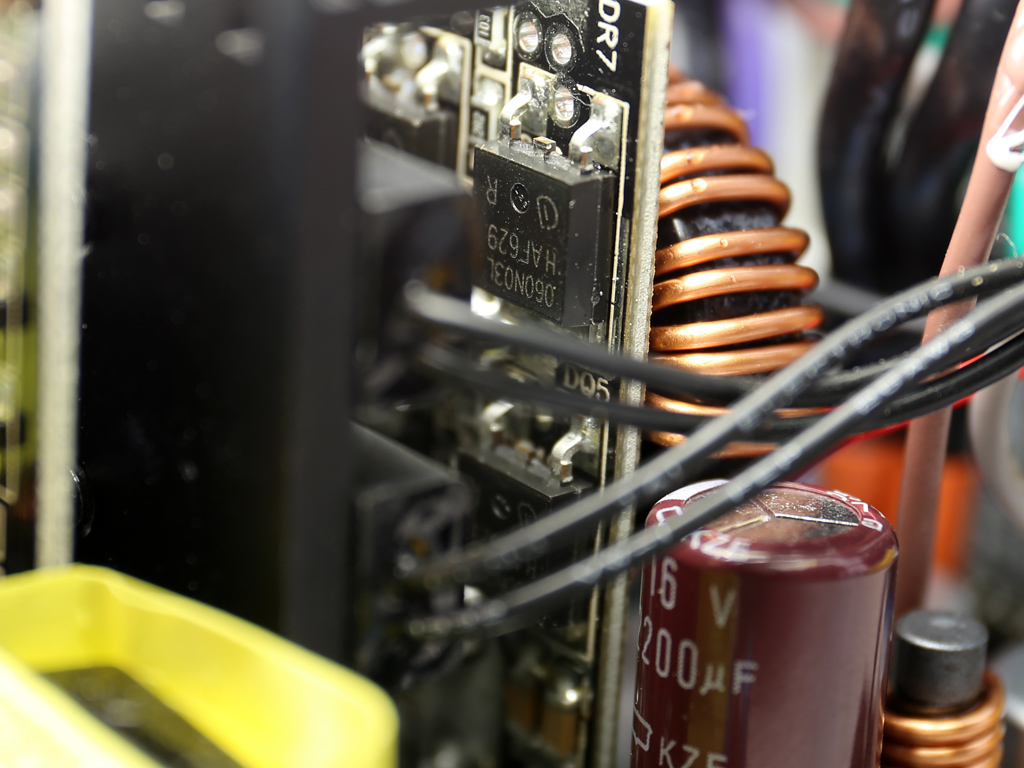
The pair of DC-DC converters is installed on the same PCB. In total, eight Infineon IPD060N03L FETs are used, and the common PWM controller is an APW7159 IC. A small number of Chemi-Con polymer caps filter the minor rails.
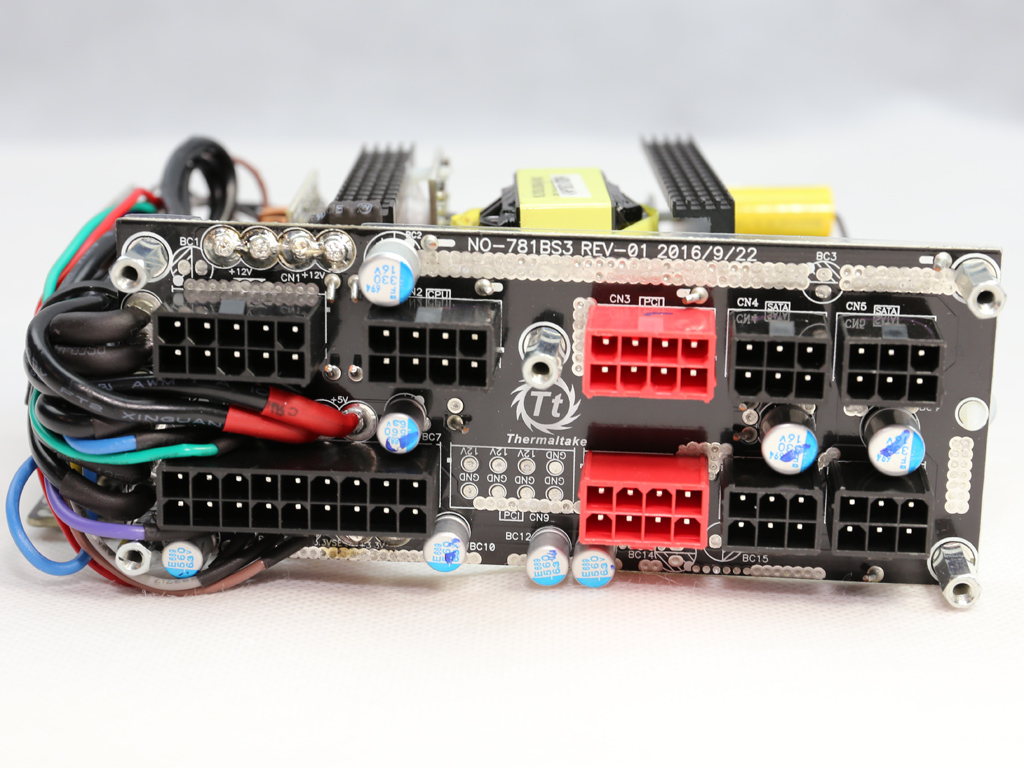
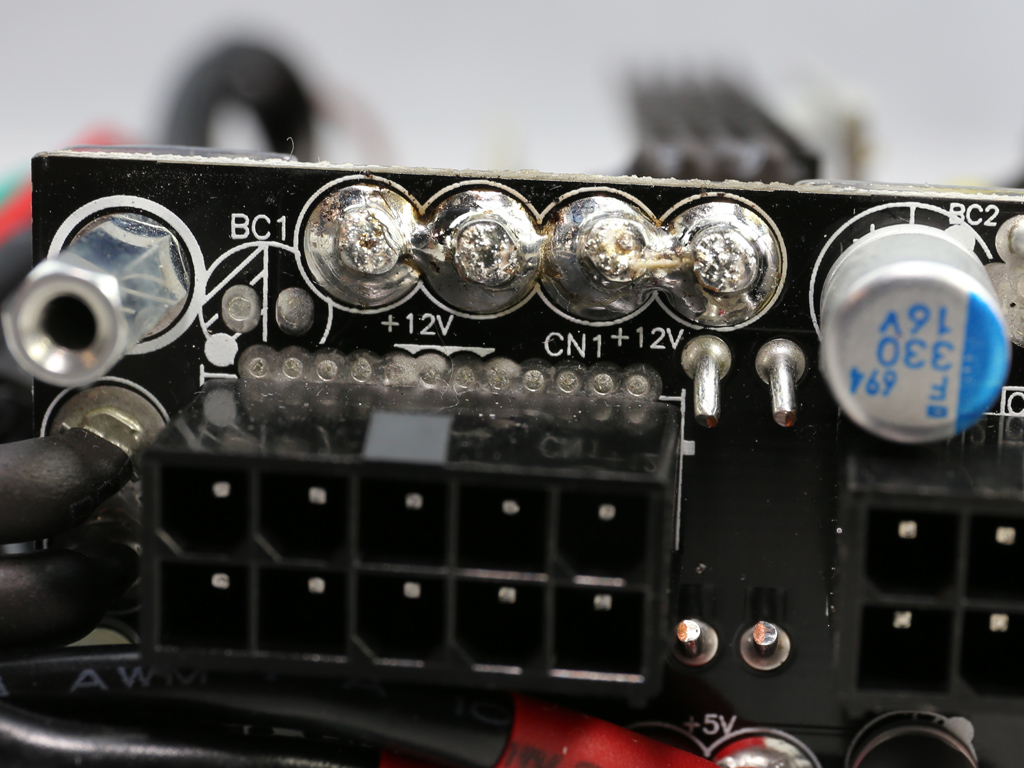
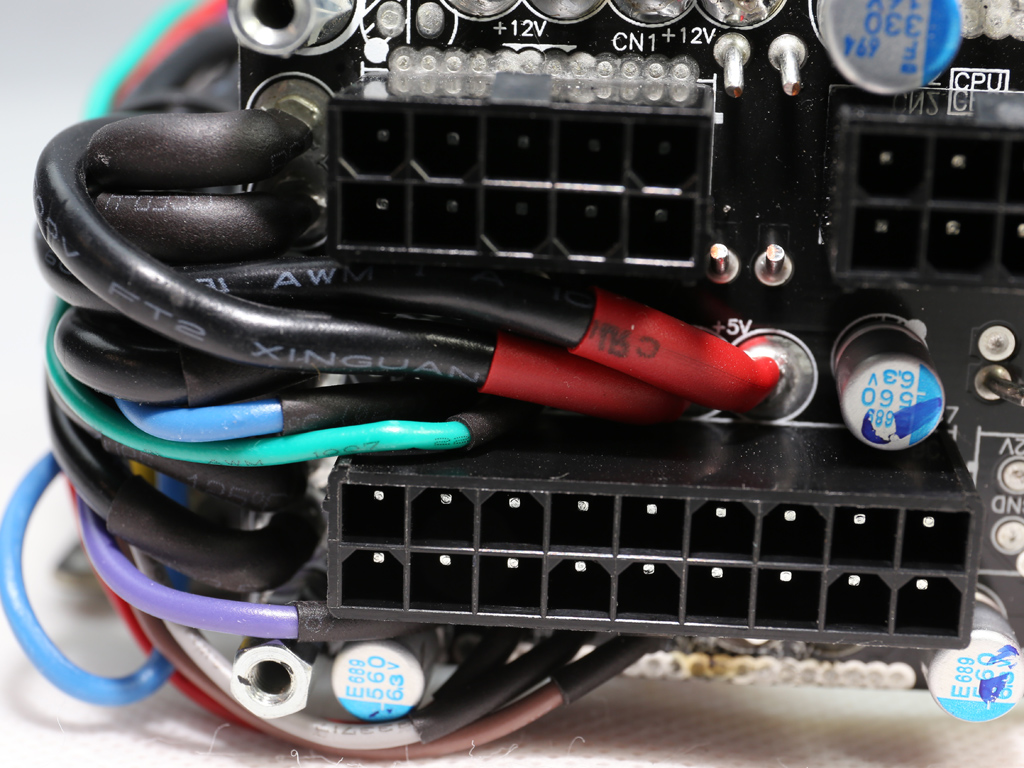
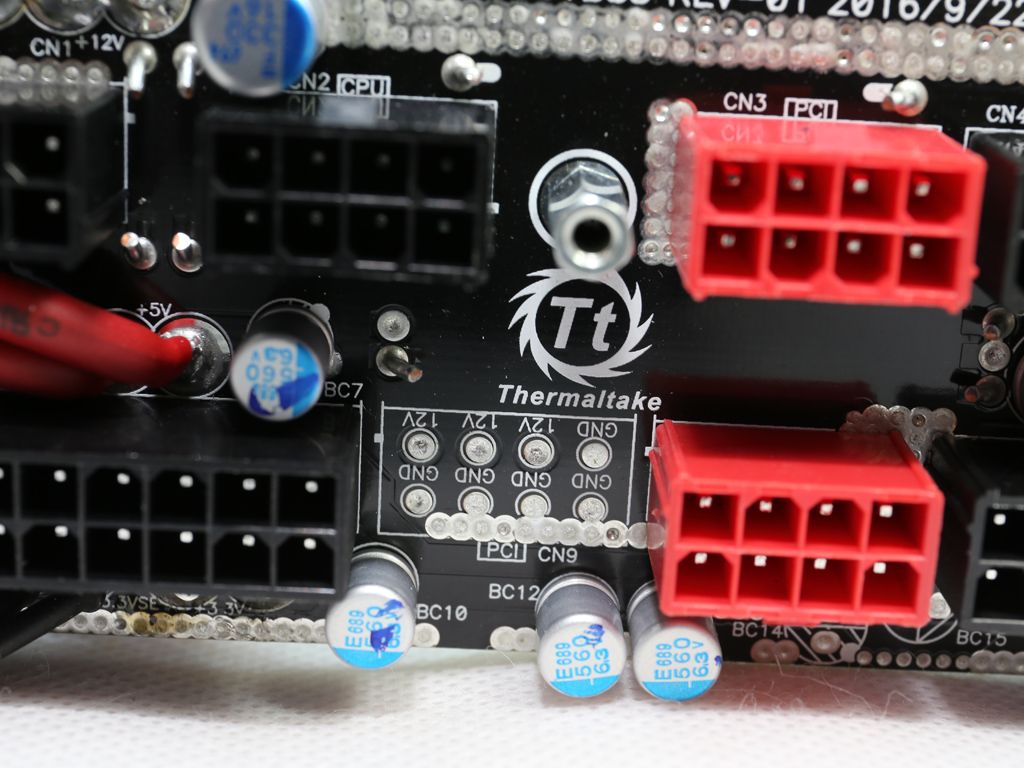
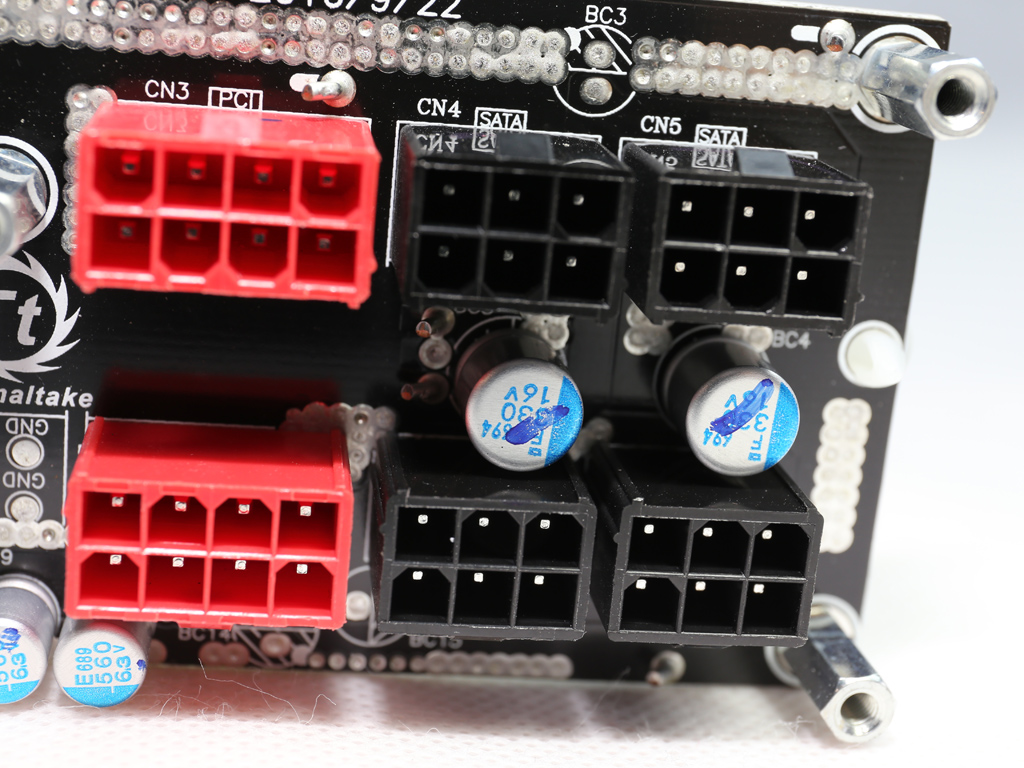
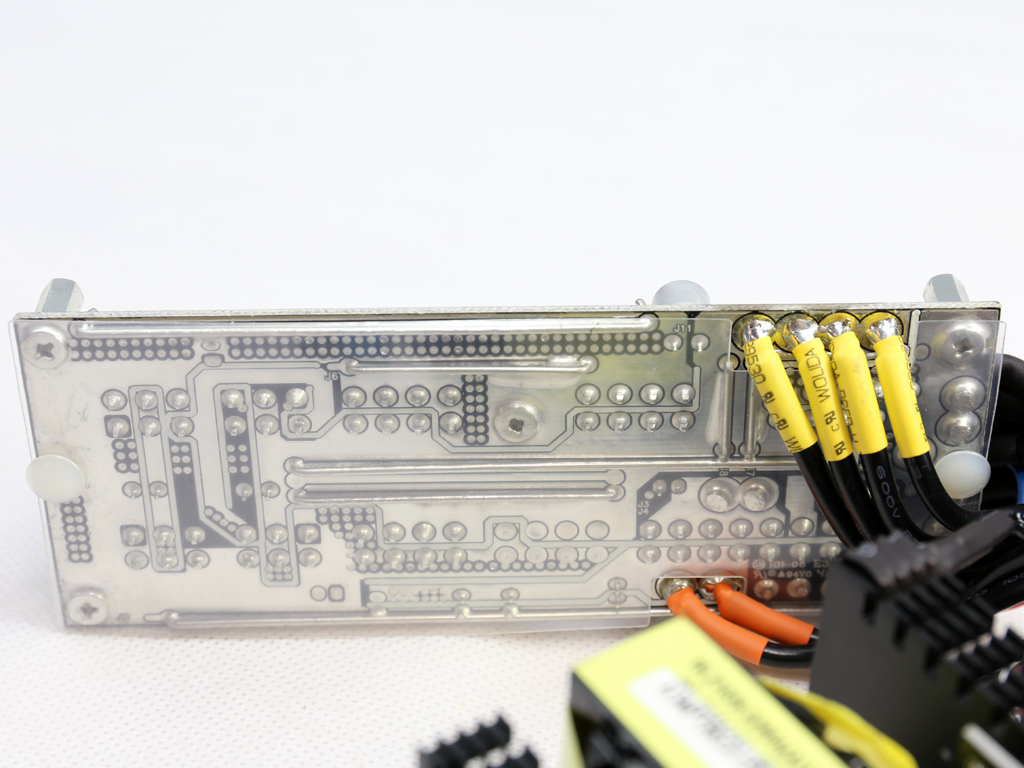
Eight Chemi-Con polymer caps provide extra ripple filtering on the front side of the modular PCB. Around back, a plastic shield protects against shorts.
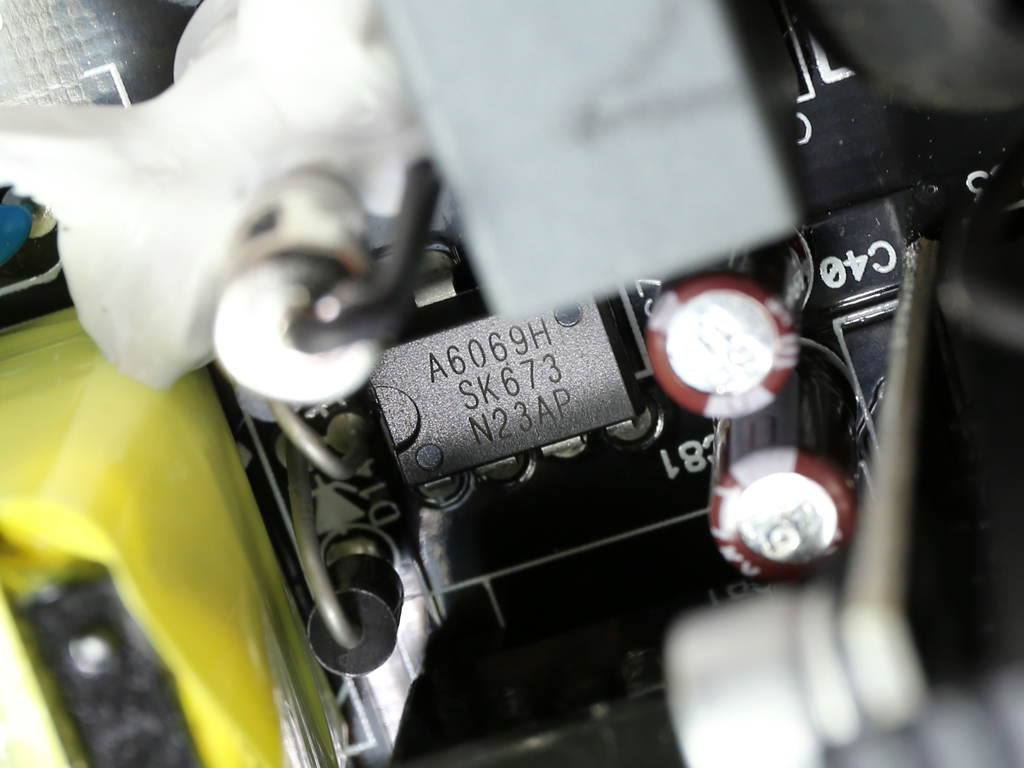
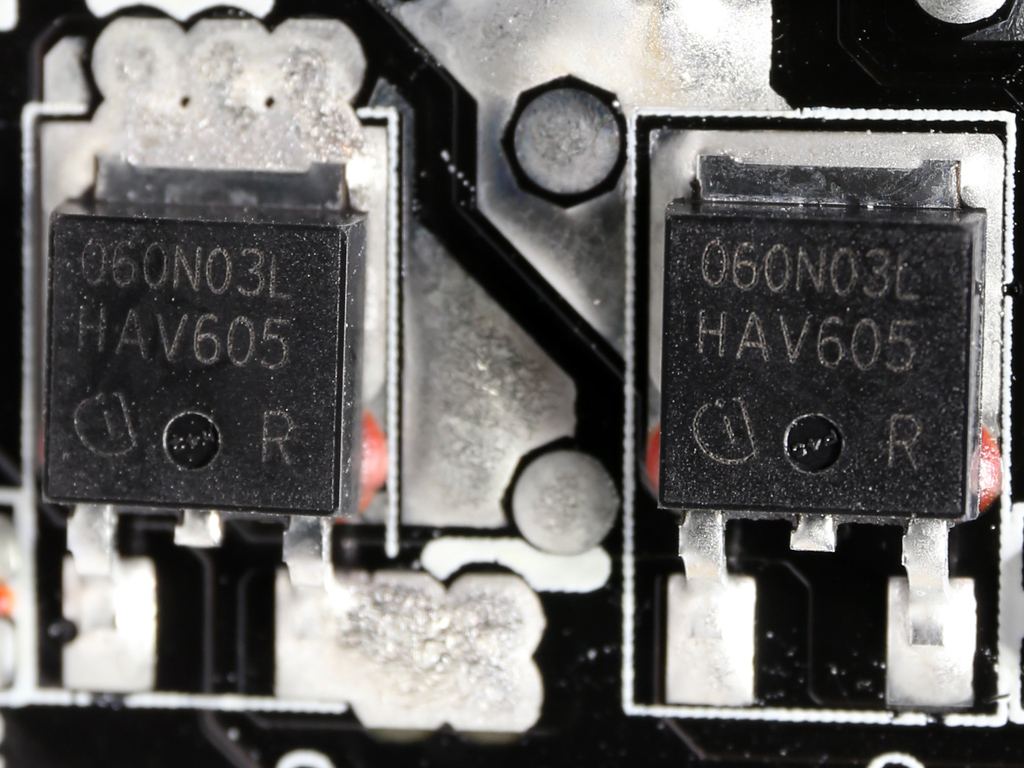
The standby PWM controller is a Sanken STR-A6069H, and on the solder side of the main PCB we find a couple of IPD060N03L FETs probably used by 5VSB. One of these most likely regulates the 5VSB rail, while the other engages the 5V rail once the PSU starts.
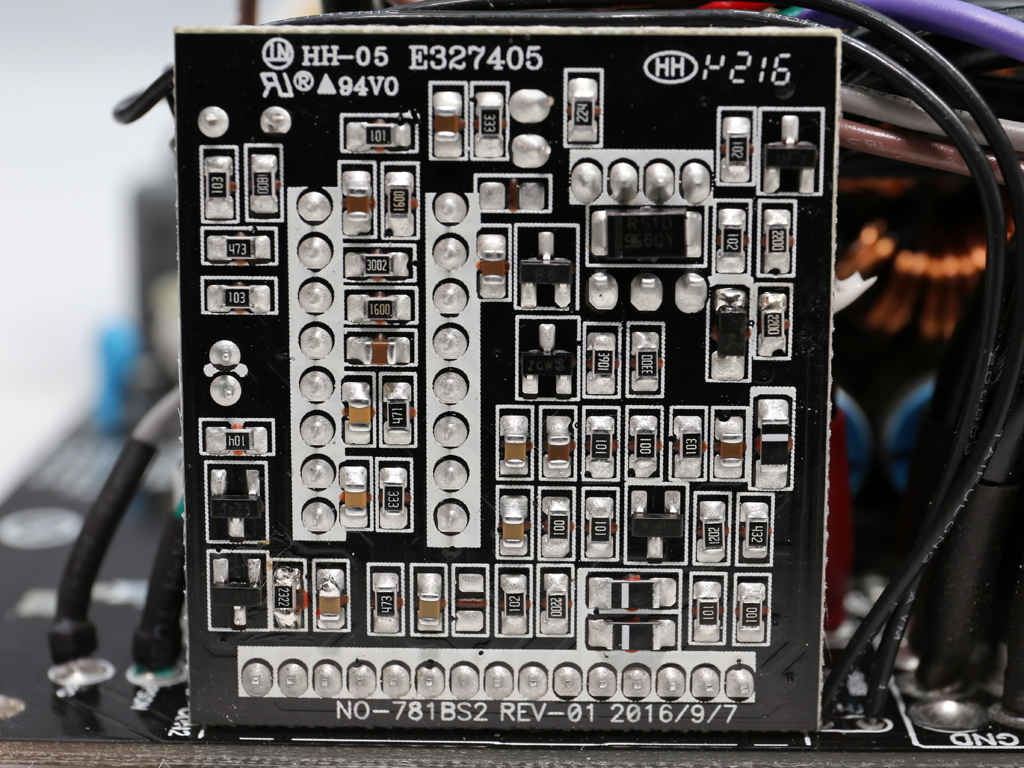
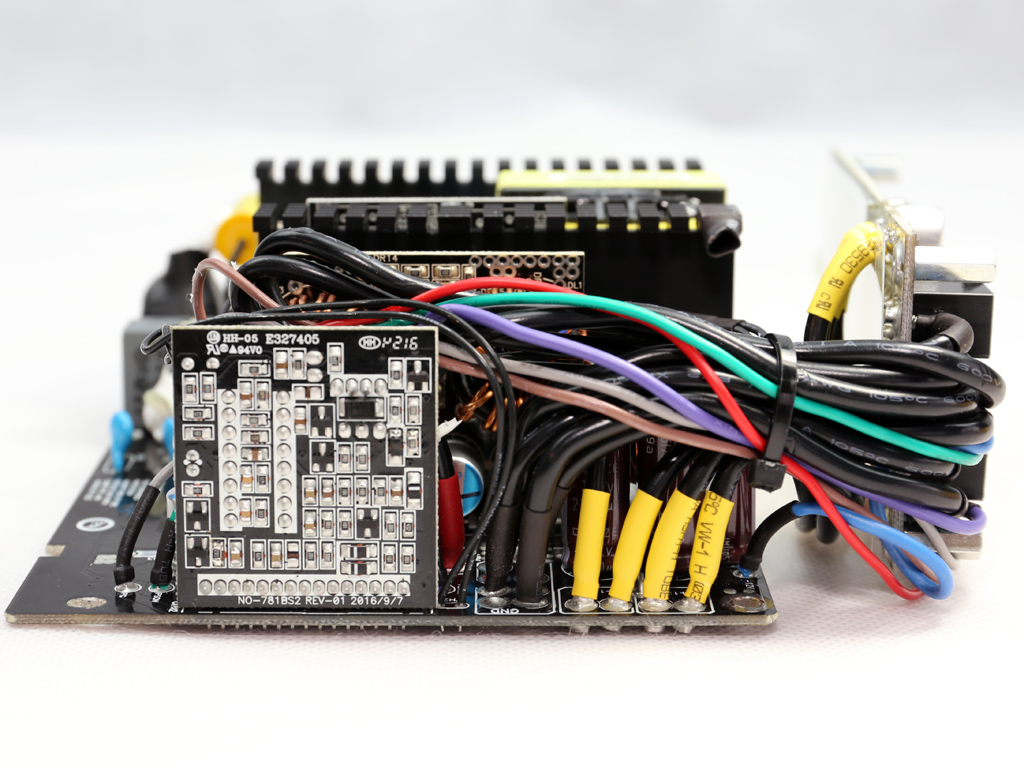
Housekeeping duties are handled by a SITI PS223 IC installed on a small vertical board. It's one of the few with over-temperature protection built-in. The same IC also provides OCP for up to two +12V rails.

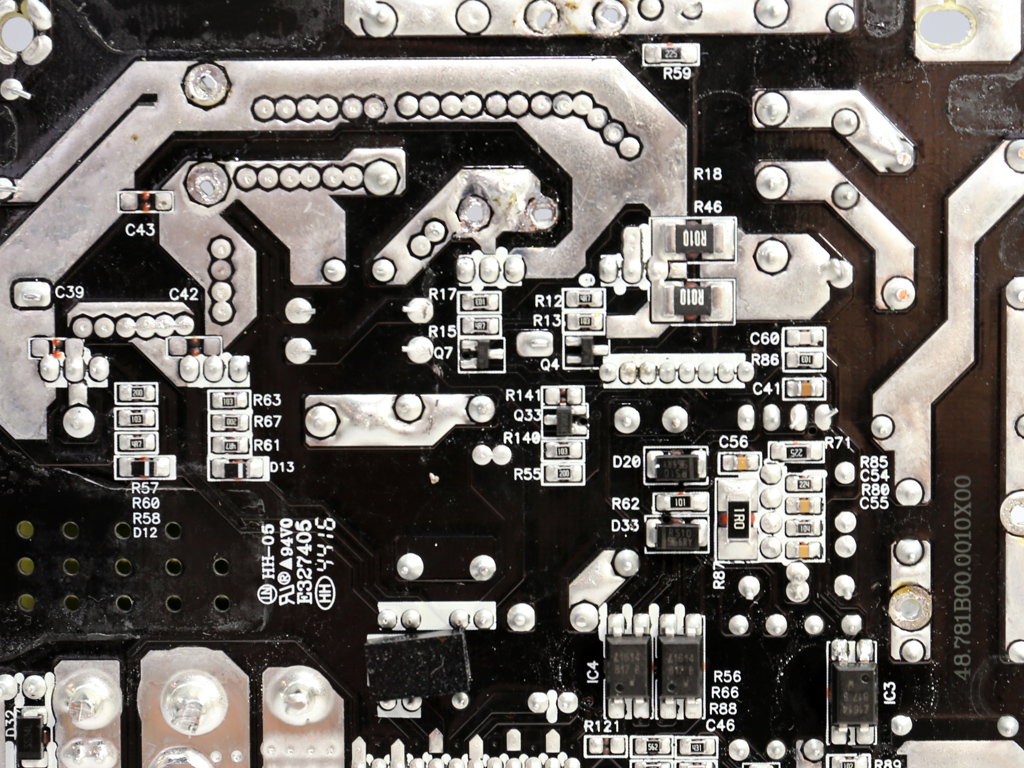
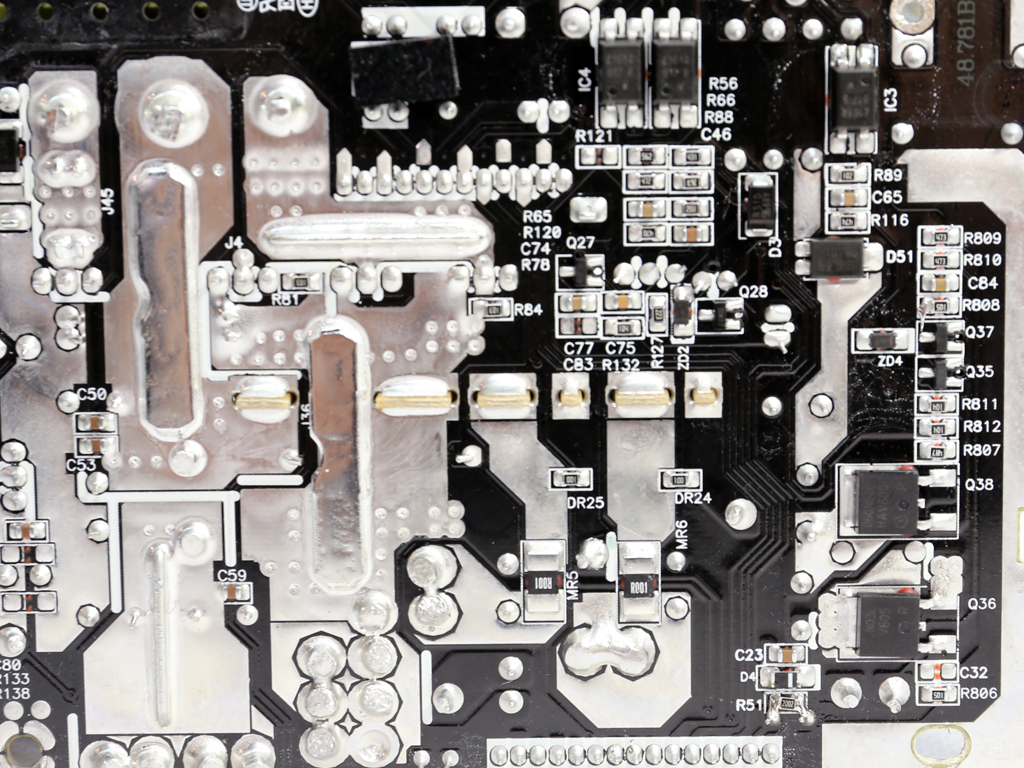
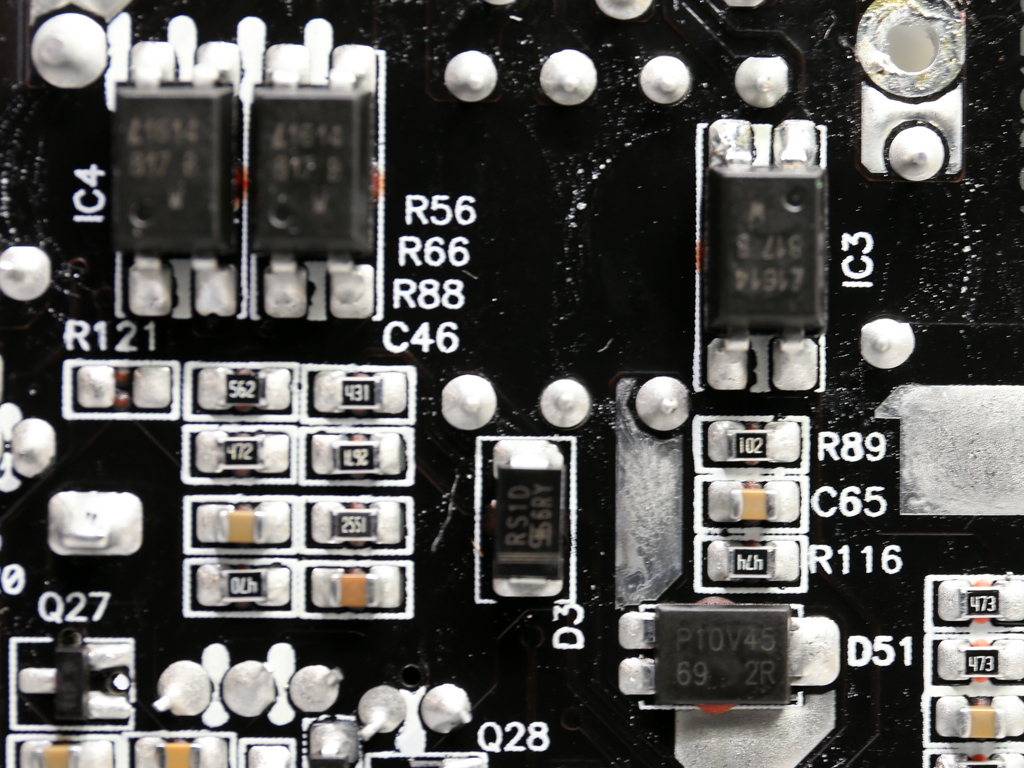

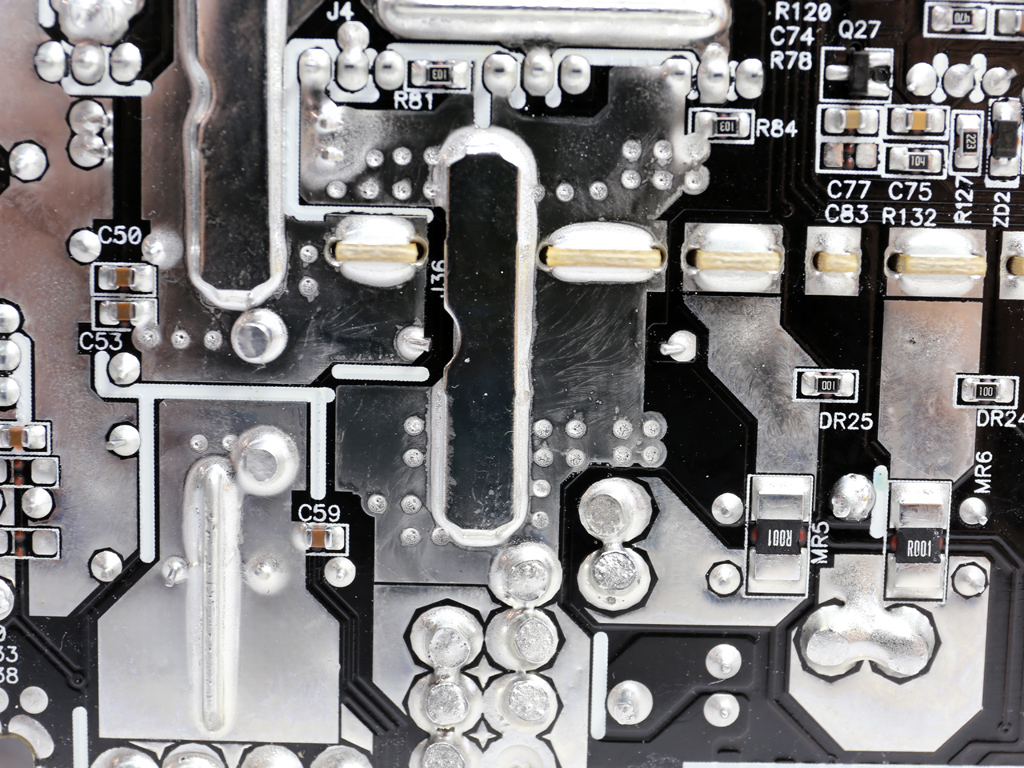
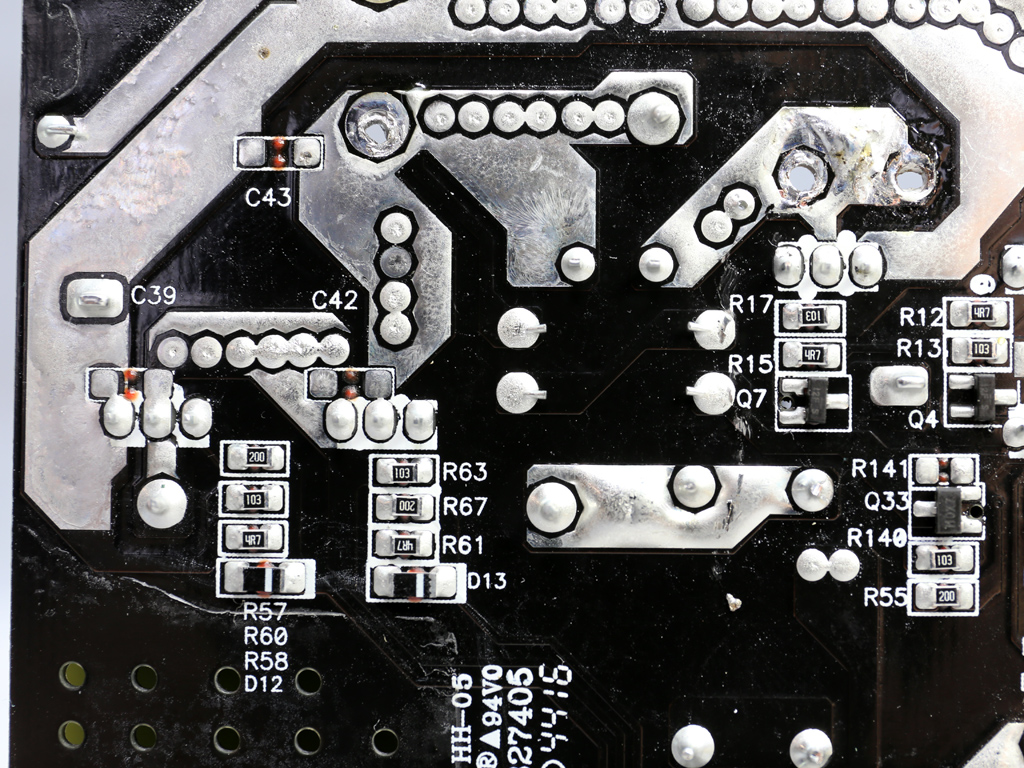
The soldering quality looks pretty good. Sirfa uses two copper bars on the secondary side to enhance the conductivity of the earth and +12V traces. We also spot two shunt resistors under the +12V islands. Those resistors provide amperage information to the OCP circuit, proving that this platform initially had two +12V rails. Sirfa probably set the OCP triggering point very high to create this single-rail implementation, since the aforementioned shunt resistors aren't shorted together.

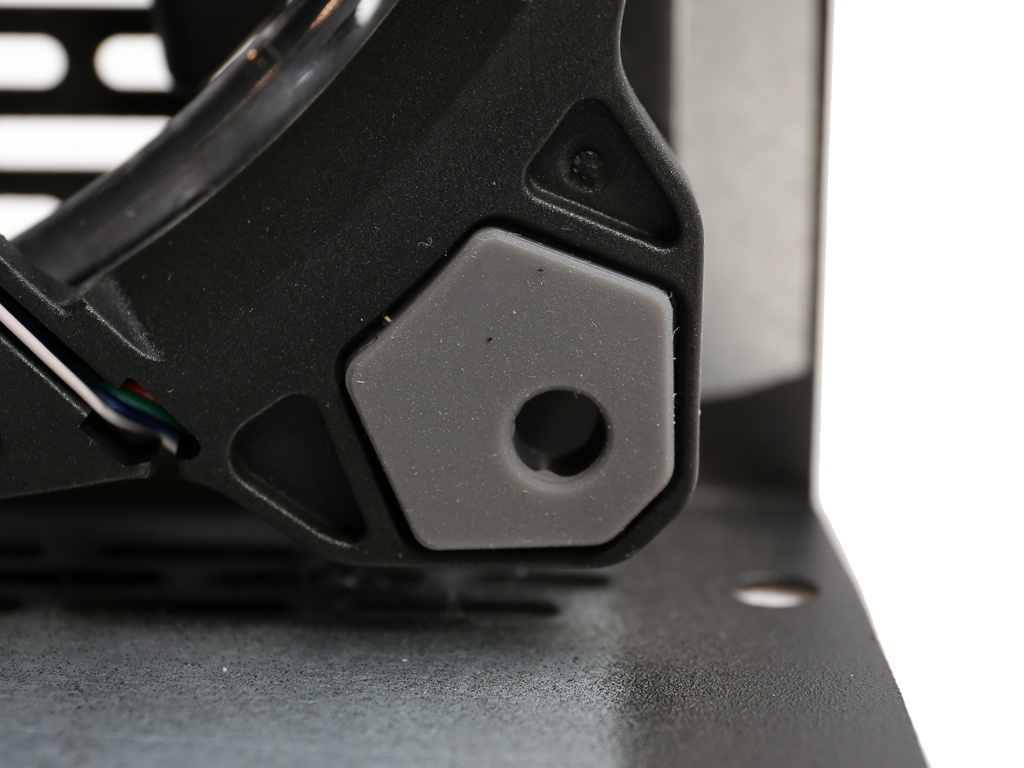
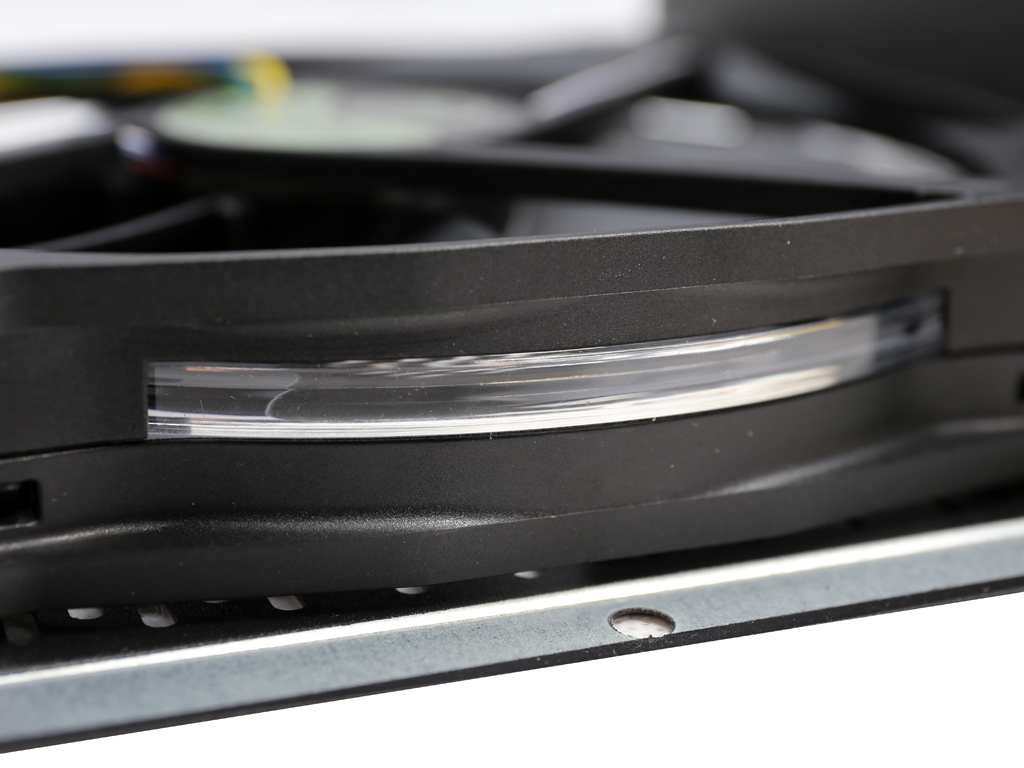
The cooling fan is made by Hong Sheng and its model number is A1425L12S (140mm, 12V, 0.30A, 1450 RPM). According to Thermaltake, in addition to RGB lighting, it also features a long-lasting hydro-dynamic bearing. That's something we want to see in a PSU with a 10-year warranty.
Similar to the other PSUs based on this platform that we've reviewed, Thermaltake's trigger point for the semi-passive mode depends more on load and less on the secondary heat sink's temperature. This can become problematic. Even when the PSU's internal temperature is low, applying a taxing load causes the fan to spin. Worse, though, is when the PSU runs under a heavy load that's suddenly removed, causing the fan to stop spinning and potentially triggering over-temperature protection. Sirfa should look into this.
Current page: A Look Inside And Component Analysis
Prev Page Packaging, Contents, Exterior, And Cabling Next Page Load Regulation, Hold-Up Time, And Inrush Current
Aris Mpitziopoulos is a contributing editor at Tom's Hardware, covering PSUs.
-
shrapnel_indie Has anyone tested this claim of a cooler PC with the PSU fan facing up into the case instead of down and drawing air from outside?Reply
Edit: I see with at least this unit, it was found to be so, What about other units? -
Phillip Wager I have my computer case in a dusty area of my house and on the floor. i flipped my psu fan to face inside the case because i was sick of having to clean the dust filter every week or so. I'm paranoid about psu dust death. I have PLENTY of case fans(5) so i'm not worried about the psu overheating in this configuration.Reply -
Malik 722 but mounting power supply fan side up won't suck in hot air from the chassis and increase the power supply temperature.Reply -
Virtual_Singularity Reply19328496 said:I want it, for my Asus
Cool
Na, you really don't, you can do better methinks. -
blackmagnum "It's common knowledge that hot air rises, so if we want to improve airflow inside a chassis, we have to help move hot air up and out with fans installed on the top or back. We'll have to revisit this topic in a story about PSU orientation and its effect on case cooling."Reply
-I'll be looking forward to the article. -
SeoulFood I just won this PSU at a LAN this past weekend. I would use it, but I won a Silverstone 850w at the last LAN. Craigslist here we come.Reply